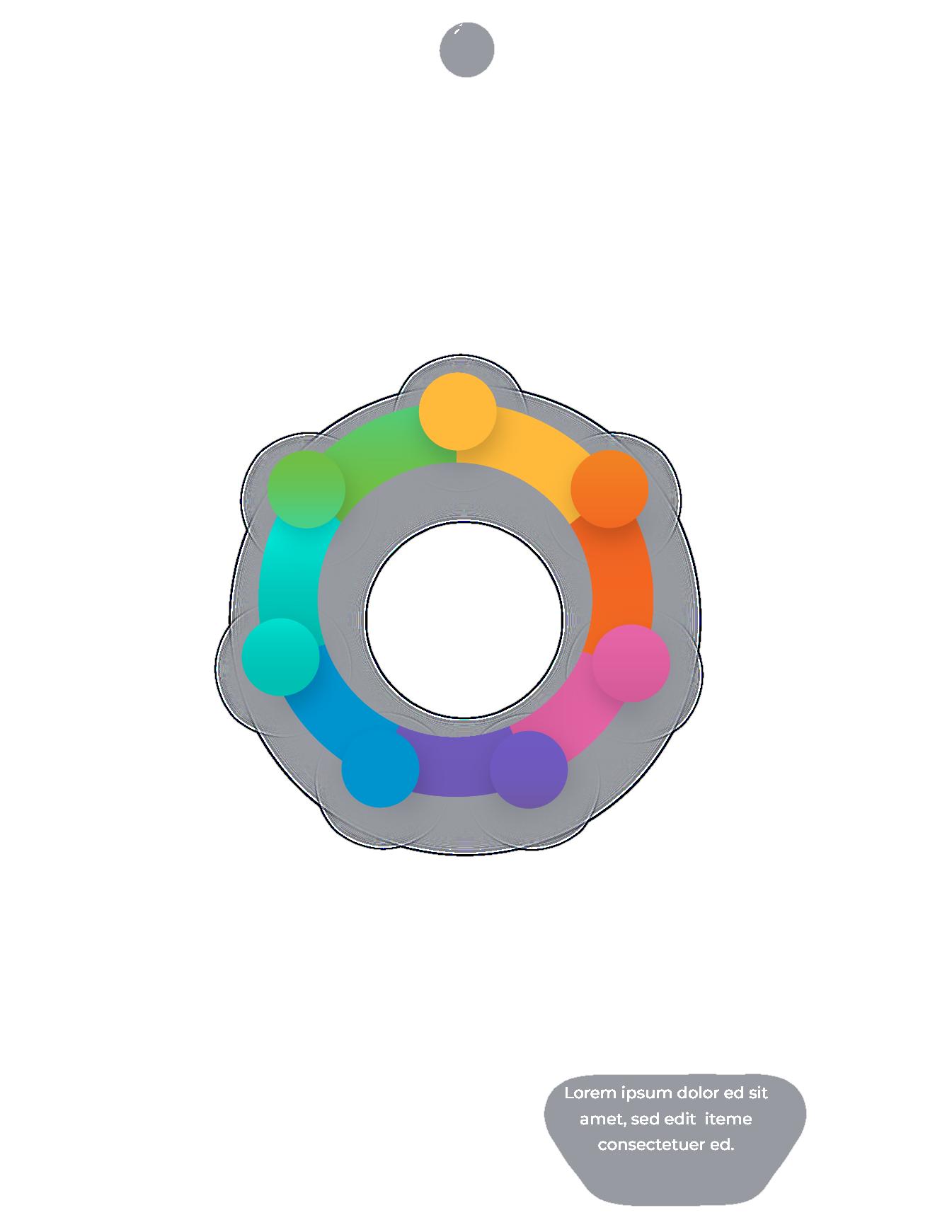






Dr. Kulddeep Buttar CEO, Buttar Group of Companies








Dr. Kulddeep Buttar CEO, Buttar Group of Companies

The world recently witnessed an extraordinary display of skill and determination at the Paris Olympics and the Paralympics, subsequentlty. Olympians and Paralympians from across the globe came together on this grand stage to exhibit the results of years of hard work and determination. These events inspire all as one observes heartfelt sportsmanship, camaraderie, and passion. Needless to say, there are valuable lessons that can be applied to all walks of life. Competing at these Games, Olympians and Paralympians from both Hong Kong and India exhibited a relentless pursuit of excellence, bagging numerous medals across various events.
My heart is filled with immense pride and respect for each individual who represented their nation, giving their all with heart, soul, and strength. Watching them carry the weight of the nation on their shoulders, one can truly feel the surge of patriotism in their veins; something that inspires all to do everything they can, selflessly, for their nation.
With this, the cover story of this issue is dedicated to the trailblazers who have left a mark on the world with their breathtaking performances at the Olympics. An ode to the exceptional Olympians of India and Hong Kong, the cover story will take you through the various events where success was achieved and medals were won. Also, we'll hear from Indian shooters Sarabjot Singh and Swapnil Kusale in an exclusive interview with our team where they talk about their journey and achievements at Paris 2024.
Lastly, I extend my heartfelt gratitude to our contributors and readers for their unwavering support. I hope you enjoy reading this edition and continue to be a part of our expedition.

is the co-founder of Curio Creative Studio, a social media marketing firm that crafts brands with heart, soul, and sophistication. Her motto is do good, be good, and look good.
GAURI
is an incurable optimist and a self-proclaimed wordsmith. She is passionate about painting and writing. You will find her surrounded by plants, humming timeless tunes.
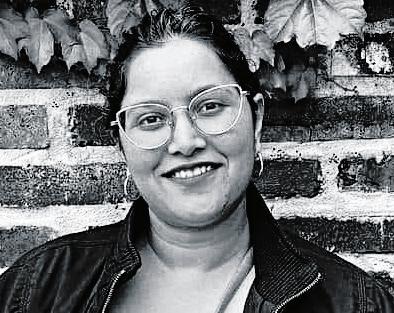

is a graphic designer with a passion for aesthetics. She strives to create designs that connect and inspire as a design is not just what it looks like; it's how it feels.
is an English teacher at Queen's Valley School in New Delhi. She is a poet, a storyteller, and a film reviewer. She enjoys talking about politics and society.

is a therapist and the founder of theperspectiveco. Best described as a learner learning to unlearn and relearn. She is on a mission to normalise therapy and create awareness.
IUSHEMAGOO
is an avid reader and a photography enthusiast. She is keen on creating content from the heart. You’ll find that her quips and quirks are as unique as the spelling of her name.
SAHIBACHADHA



is a life coach and TEDx speaker. She helps people in reprogramming their subconscious mind to become a better version of themselves and live a joyful life.

is a certified life coach, cognitive behaviour therapist, neuro-linguistic practitioner, and a motivational speaker. She is also the founder of Aesthetic Horizons by S&S.
SUMRITBUTTAR
is an explorer who wants to know more about digital innovation. He completed his graduation in Public Health with minors in Business Administration from SFU.

MANJULAVIJH
is a food photographer and stylist. A PhD holder, she has been an academician for 14 years. She is currently pursuing her passion as a food, product, and lifestyle photographer.

VIDHIARYA

is the Editor of the magazine. He completed his master's in Journalism from the University of Hong Kong and has worked with several media houses.
is a lawyer by profession who is also studying French on the side. She is a dog mom, a travel enthusiast, and inquisitive towards local crafts and handlooms.






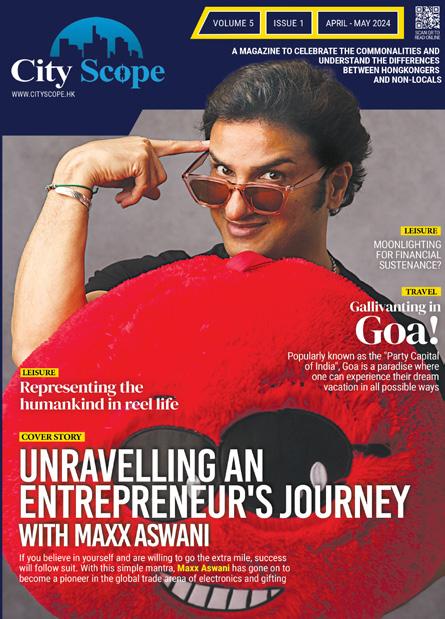


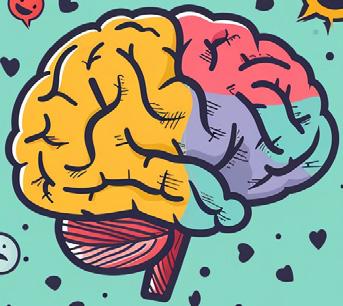

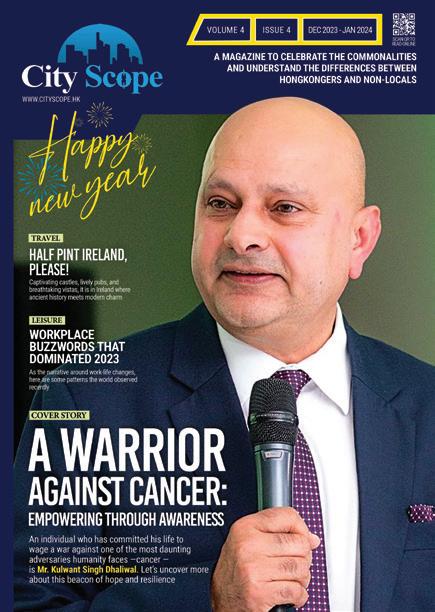
VIDHI ARYA Senior Copy Editor
SAHIL MAGOO
Editor-in-Chief (sahil@cityscope.hk)
Design by
dhvanidesign@gmail.com


For Advertisements/ Guest Columns/Contributions: info@cityscope.hk editor@cityscope.hk @cityscopehk @CityScopeMagazineHK

The team members of City Scope have tried to make sure that the content is accurate on the date of
The views expressed in the articles reflect the author's opinions and are not necessarily the views of the publisher and the editor. The published material, adverts, editorials and all other content is published in good faith. City Scope Magazine accepts no liability for any loss or damage of any kind caused by the errors and for the accuracy of claims made by the advertisers. All rights reserved. Nothing can be partially or in whole be reprinted or reproduced without written consent from the Editor.
City Scope reserves the right to make any changes with immediate effect and without providing any prior notice.
As conversations around mental health are brewing in quaint corners and living rooms, it's more important than ever to be well-informed about a subject that has long been a taboo. These books will expand your worldview, one page at a time
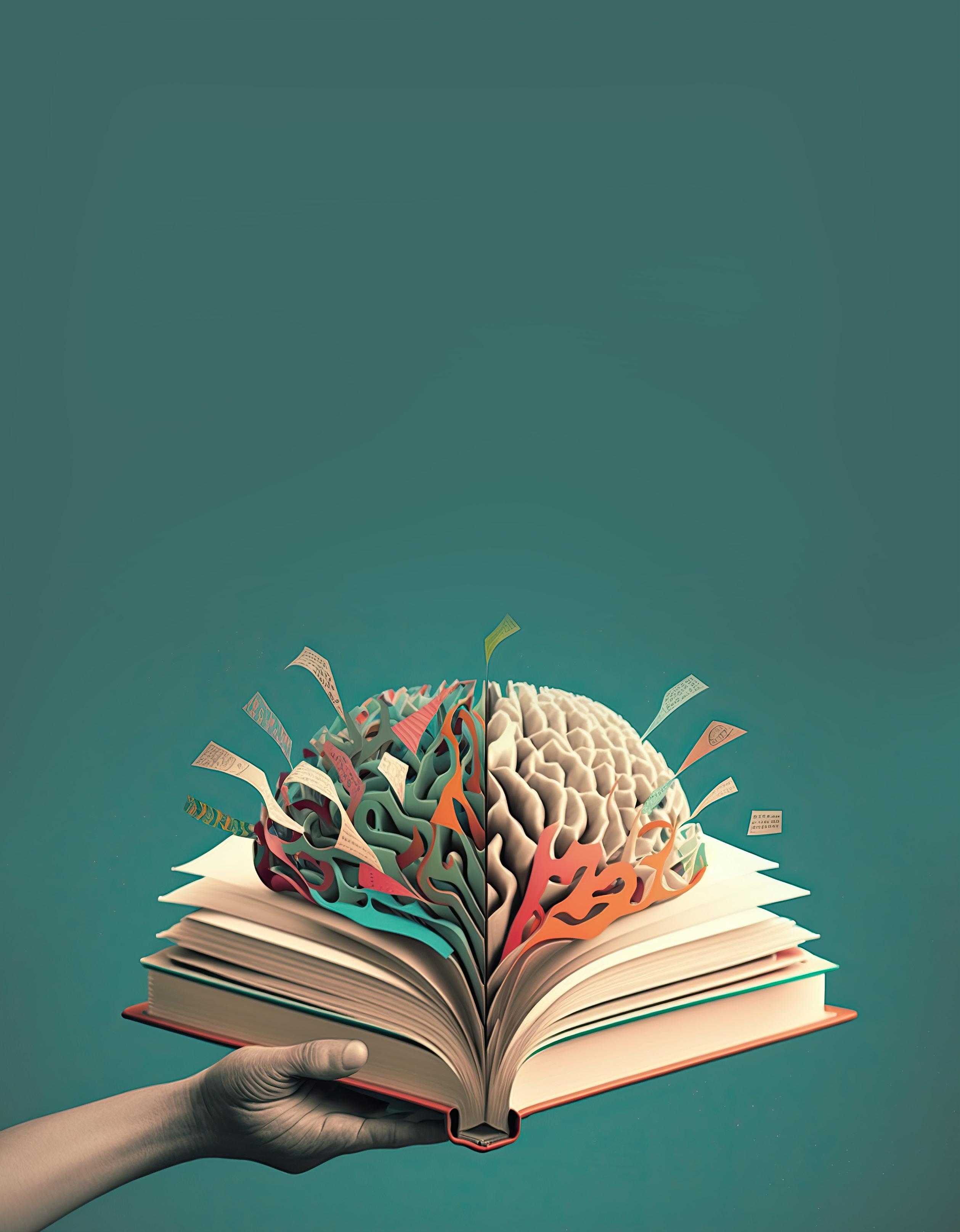
Astha Anand
In today's day and age, every second person in a group of five is suffering from mental distress. The pressure to balance multiple responsibilities, the need to keep up with work deadlines, personal goals, and social expectations creates an overwhelming burden on an individual, resulting in unwanted tension and trauma. As a result, it has become crucial to adopt stress management techniques and focus on one's mental health.
Our parents did not have the means to work on their mental health. They also did not have the right resources or education around the subject that was then considered a taboo. However, the times have changed.
Conversations around mental health have grown substantially over the years. People are beginning to recognise that mental health is just as important as physical health. There's awareness on how mental well-being affects productivity, quality of life, and relationships, leading to a growing emphasis on mental health support.
Employers, educators, and communities are increasingly prioritising mental health resources. One such medium that helps in conveying the message is books as they offer valuable insights into understanding mental health conditions, and coping mechanisms, making them useful tools for personal growth and self-awareness.
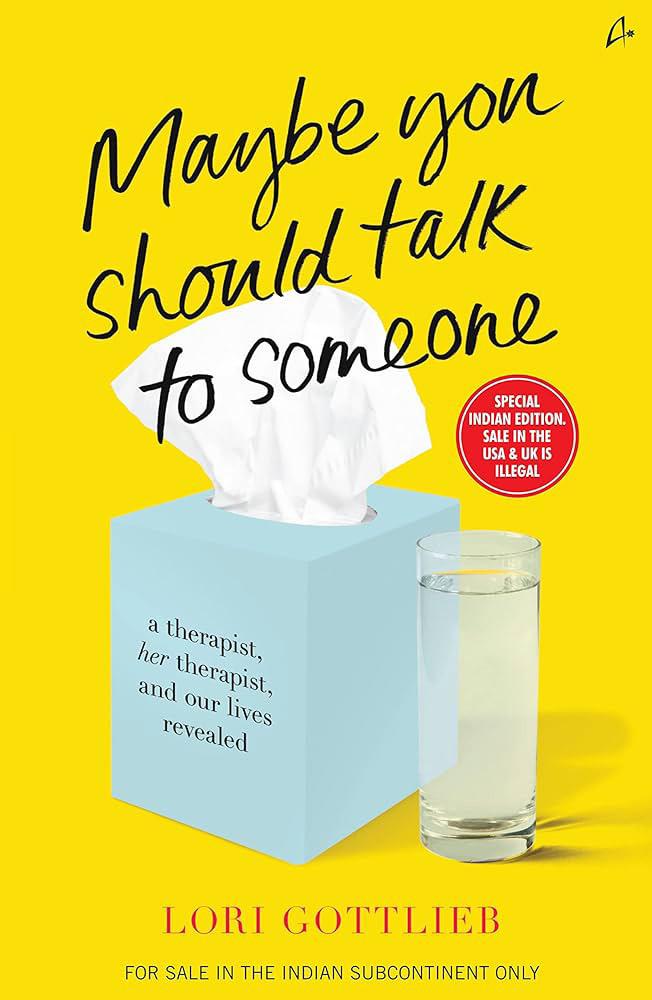
Books help in understanding things at a personal level. What you read, stays with you. Here are my top three recommendations that one should read if they are looking to understand and improve their mental health:
The book dives deep into getting a taste of therapy as a therapist. Author Lori Gottlieb writes about her clients and also shares her experience as a therapist. With an interesting choice of title, 'Maybe You Should Talk to Someone', the author encourages people to talk about things as sharing helps in resolving issues. And, even if it doesn't solve them, it surely does open doors to understanding them.
In this extremely witty and endearing read, we find a road to self-discovery by discussing and understanding the bitter truths and lies we all tell ourselves time and again. Through the book, you'll find personal anecdotes that therapists can relate to. At the same time, it offers insightful accounts for all existing and potential clients in therapy. It shows how each client is different from the other. How we all aren't exactly ready for therapy, ready to see the mirror, ready to become vulnerable.
We all have our ways and coping mechanisms to deal with the problems and issues at hand. However, by opting not to be vulnerable infront of others, we harm ourselves in the long run.
Glover Tawwab
This book is one of my all-time favourites. Nedra Tawwab is a renowned therapist and her 'Nedra nuggets" are extremely popular. Boundaries are core to every human being


as they help us maintain balance in life, friendships, relationships, and at work. In this book, the author goes on to demystify boundaries and offers different perspectives. Tawwab discusses simple yet powerful ways to establish healthy boundaries and how to communicate them effectively.
Changing your behaviour and not forcing others to change can be a significant part of setting boundaries. We often try to communicate our boundaries clearly and enforce consequences when they are not respected. It's important that when someone crosses the line on one of our boundaries, we take action to protect ourselves and our needs.
She further shares that there is no set rule book laid out for what qualifies as a boundary and what doesn't. What I may see as a boundary, another might not. For instance, what are your views on working on a vacation. Some people don't mind working on a vacation while some are not comfortable at all. Your boundaries are unique to you and has nothing to do with what others think.
Author Sonali Gupta released her first
There's awareness on how mental well-being affects quality of life, leading to a growing emphasis on mental health support. Books offer valuable insights into understanding mental health conditions, coping mechanisms, and therapeutic practices, making them powerful tools for growth
book in May 2020 when COVID-19 was at its peak and there was chaos everywhere. It was at that time when most people realised that mental health is an important aspect of life.
As evident from the title, the book revolves around anxiety — a mental health crisis that has gripped over 301 million people in the world. The word 'anxiety' is highly overused in today's world. Almost everyone uses the term without understanding the gravitas of the situation. Through case studies, Gupta tries to encapsulate mental health conditions, specifically in India, among young adults and millennials. She identifies how anxiety as a phenomenon that can be triggered anywhere by anyone or anything.
After addressing questions such as what is the difference between anxiety and stress, what is a panic attack, and how does one know that now is the time to get help, the author provides a few strategies for those who are susceptible to anxiety attacks. Through these techniques, one can confront their fears and take control of their lives.
Understanding your mental health, navigating through challenging times, being in control, balancing life, and taking care of yourself are some of the fundamentals of mental health and well-being that need to be revised from time to time.
However, you should know that reading is not a substitute for actually getting professional mental health support and help. There is no alternative to therapy. It can't be substituted with books, movies, spas, or shopping. Therapy is a tool that can be used to your advantage to be a better version of yourself. If you ever feel the need to seek support, do it immediately.
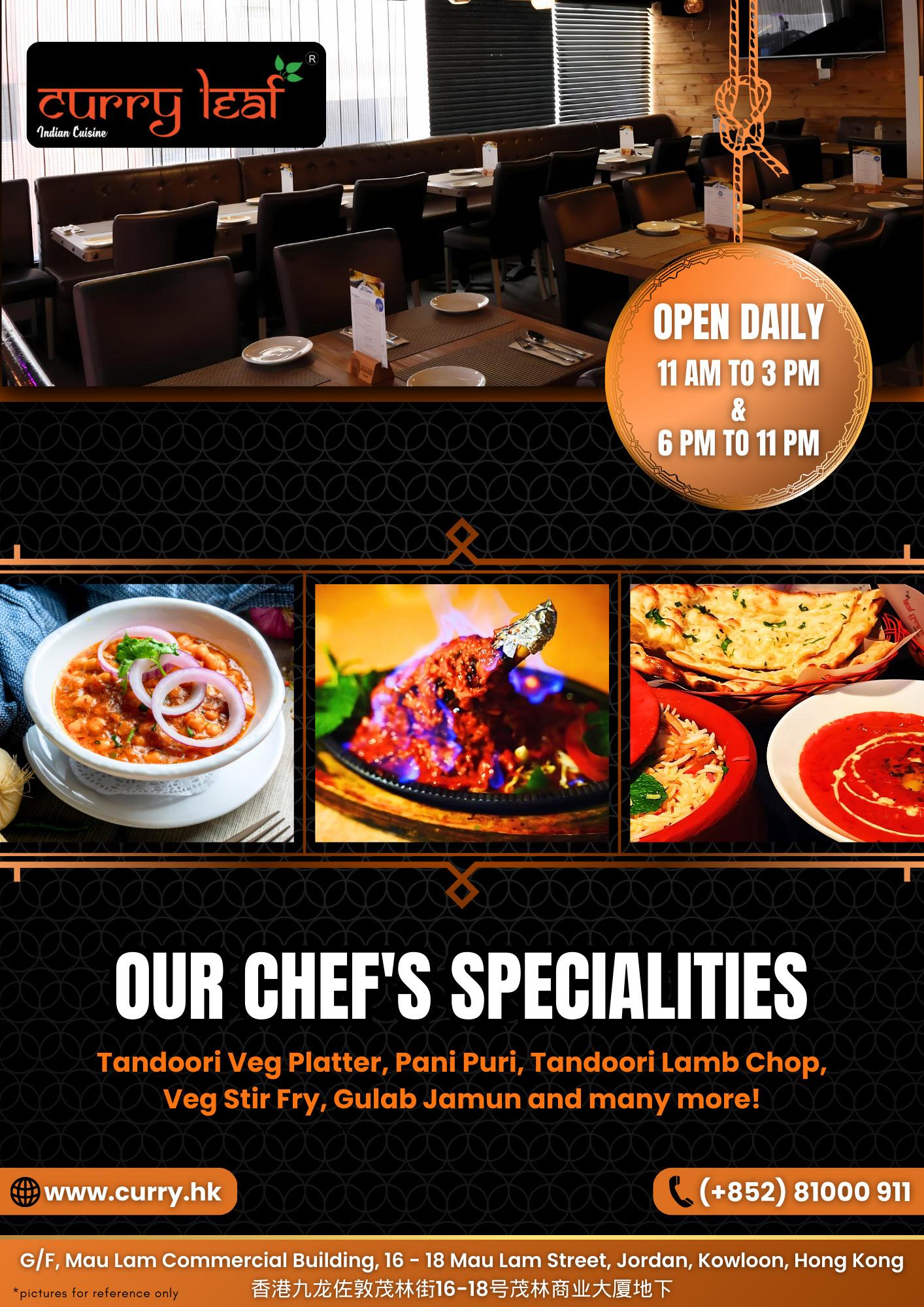


Renowned for its picturesque landscapes and wineries, Paso Robles is a captivating destination that beckons travellers seeking a serene escape. Whether you're a wine connoisseur eager to explore its acclaimed wineries or simply in search of a tranquil retreat amidst stunning surroundings, the city promises an unforgettable getaway
Originating from its Spanish counterpart of 'El Paso de Robles', Paso Robles translates in English as 'The Passage of the Oaks', and is the rare Californian jewel that finds itself to be a sublime hybrid of being both the Wine County and Cowboy Nation. Every ounce of this place screams culture, pretty aesthetics, and nobility in its truest

sense. So, how does one plan a vacation and more importantly choose Paso Robles as a must-visit destination when travelling to the United States of America? Read on!
If you find yourself on the West Coast, with California on the agenda, make sure to spend at least two or more days in Paso Robles. Situated in SLO (San Luis Obispo) California, with an equidistance to both the major cities of Los Angeles and
San Francisco, Paso Robles is situated in the centre and is easily accessible via roads, railways, and airways.
Though it's highly recommended to travel via airways as the county is connected to airports from every direction, with San Luis Obispo County Regional Airport being the closest, you could also drive down from either north, south or east, as the town has accessible highways. It also has good railway connectivity as it is accessible by train from numerous cities.
Touted as one of the 10 best small towns in USA by Country Living Magazine and one amongst the 52 must-visit places by New York Times, Paso Robles is a divine destination boasting of many charms to attract one and all.
Vineyards and ranches are not the only attractions here, it also offers a host of distilleries, craft breweries, and artisanal olive oil for the refined taste of tourists. For the cultural and historic geeks, there's an array of art galleries and museums to choose from, and for those seeking an adrenaline rush through sporting activities, there's zip-lining and water sports at Lake Nacimiento. Naturally, you ought to giddy-up for horseback riding in Cowboy-country too!
The list just doesn't end here as Paso Robles hosts year-long family-friendly events that keeps everyone on their toes with anticipation. The town has some delectable cuisine options that are offered in the many restaurants (specialising in serving up some organic produce in their farm-to-table dining restaurants), a field of Light at Sensorio — one of California's largest immersive art exhibitions — and even hot springs, all of which will be covered in depth.
You cannot come to wine-country and not start with wine first! It's considered as quite the cardinal sin here. So, without further ado, let's take you through all that there is to know about wine in Paso Robles, the best spots for wine-tasting, the right meal pairings, and what not, all of which left us on cloud wine, courtesy of our partners in wine, Winnie and Aku Bedi.
My family and I were recently vacationing for a fortnight in the States (more on that later), and had our return flights scheduled from Los Angeles, so exploring California was definitely on our radar, what wasn't even remotely there though, was Paso Robles. Indeed, the very first time we heard of this magical little town was through Mr. and Mrs. Bedi, who are also the proud owners of La De Vi Winery there, and who deftly mesmerised us within a few minutes to not only make Paso Robles our two-day pit-stop towards Los Angeles, but anticipate it more than any other destination on the list!

Our gracious hosts had invited us to stay with them at their beautiful 72-acre estate, replete with a stunning holiday home, a swimming pool, a diverse terroir of a vineyard and memories to last a lifetime. An experience that can be enjoyed by one and all through visiting their estate and booking the stay at Airbnb.
What I loved most about our stay here was that it was nowhere near a commercial or business-as-usual stay that you'd get to experience in most other vineyards, but rather a homely and an all-embracing
escapade. This family-owned vineyard is the legacy of the Bedis which shines brightly in the commitment and care they have given to this estate.
From growing a myriad variety of grapes to crafting wines from hand-picked grapes (from vineyards to wine bottle), to incorporating sustainability in every aspect of farming and wine-making. Above all, valuing the wine community in the equitable and belonging fashion it deserves.
Currently, the boutique-winery houses five artisanal wines from their 2021 reserve:

Vineyards and ranches are not the only attractions in Paso Robles. The town hosts familyfriendly events throughout the year that keeps everyone on their toes with anticipation
l Cabernet Sauvignon: This wine is a burst of fruitful flavours such as currant, blueberry, plum, along with notes of blackberry. It also packs bolder flavours of espresso, tobacco, and spice to give it a smooth lingering finish.
l Petite Sirah: A dark pit of swirling flavours await you in a glass of this wine. Red fruit, currant, chocolate, cocoa, bosynberry, brown sugar, and baking spices leaving a deep tingling aftertaste on your palate to make you crave more.
l Tryst: An easy red sipping wine with hints of leather, herbaceous cherry, chocolate, blueberry, blackberry, and tobacco flavours that are bottled to perfection to create this masterpiece.
l Sauvignon Blanc: This bright white blend is citrusy and one can feel the flavours of
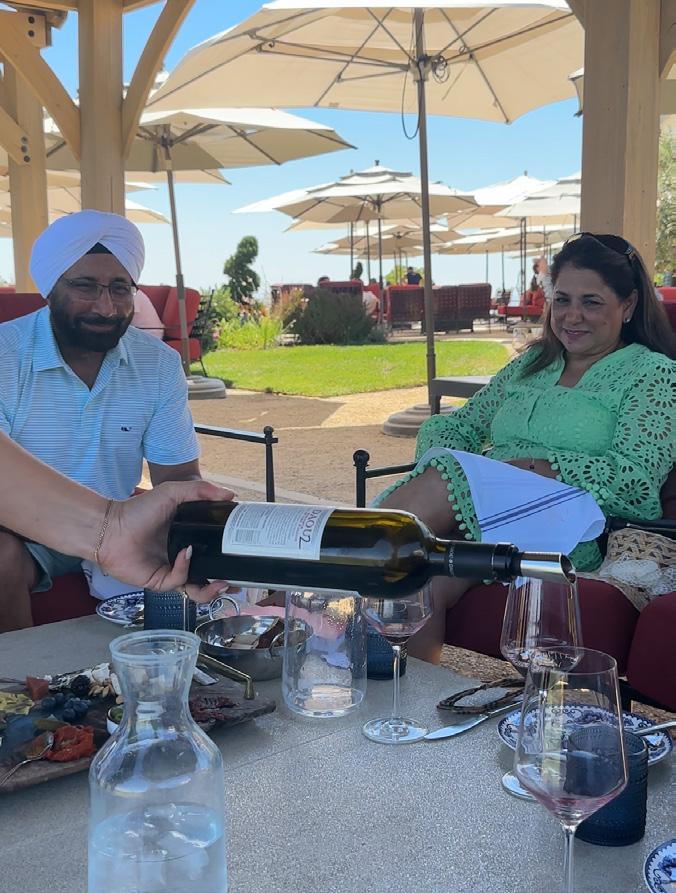
honey, lemongrass, gooseberry, and pear. When served chilled, it gives a crisp acidic taste. A hot summer day and an ice-cold blanc is a match made in heaven!
l Sauvignon Blanc Late Harvest: Tantalise your tastebuds with mead, golden raisins, floral tea, apricot, marzipan, poached pear with cinnamon, and apple that offer an ideal blend of sweetness and acidity.
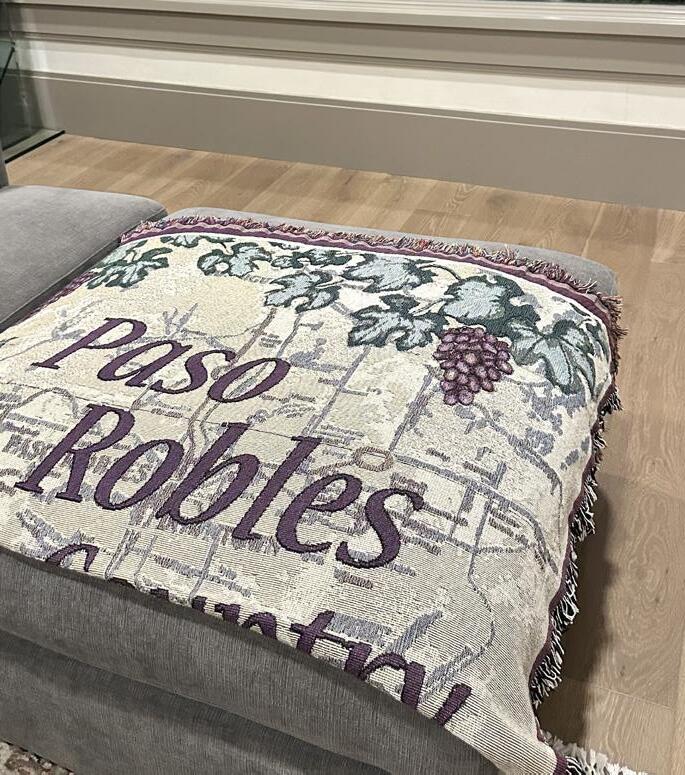
To mention that the hospitality, views, and experiences at the La De Vi estate was spectacular would be an understatement, for it was above and beyond! And what's better, is that any of us can become a member of their wine club from the comfort of our homes, by just subscribing online, post which four premium wines of your choice will be delivered to your doorstep every quarter. For more information about their wines as well as their pricing, visit their website: www.ladeviwines.com.
While Day 01 went by in a wink and a sip in the presence of the charming Bedis, little did we know that they had just begun spoiling us silly, for Day 02 rolled in Robles with quite the heavy-duty, laborious task of wine-tasting at not one but two vineyards, starting as early as 10am. Imagine our plight! (read: delight, obviously).
Another family-owned vineyard and family estate, the Lebanese brothers — Georges and Daniel Daou — are renowned for actualising their childhood dream into a Daou family legacy. While the story of the inception of this legacy makes for a fascinating read in itself, I would leave the readers to chance upon it themselves on their official website, and rave rather about the gem that is their Paso Robles Vineyard and Estate.
Set atop a 22,000 feet inclined mountain (known as Daou Mountain), this estate is breathtakingly beautiful from the moment you enter and it offers some of the best panoramic views of not just the estate but also Paso Robles. The humble and eager staff at the estate were a delight to be hosted by,



for they assist you with just the right pairings of food and wine (depending on the tasting package you've booked) and under their tutelage, even a novice could speak wine like a sommelier.
Our hosts, Mr. and Mrs. Bedi, were of course with us there to showcase some of the best and eclectic sips of rose, red, and white wine Daou has to offer, having of course not only been here several times but also as one of their grape-suppliers. If I were to pick my favourites here, I would say the lightness and fresh zing of the 2022 Reserve Rose and the richness of the Bordeaux-style 2021 Eye of the Falcon were most amenable to my palate. This was of course all washed down with a perfect charcuterie platter, under the bright golden rays of the Sun and a luscious view. Stuff that dreams (and movies) are made of!
Buzzing merrily from our morning tour, we headed then to the Opolo Winery, a storied estate in the Westside Willow Creek District that offers its guest and members delectable food pairings, winery tours, and spectacular views.
Opolo too, is a winery that has family and friendship at the heart of its establishment. Founded in 1999 by friends Rick Quinn and David Nichols, Opolo is famous for its Mountain Zinfandel and Cabernet Sauvignon. Their indoor bar and restaurant has a rustic appeal, with barrels of wine lining up the entire arena, giving it the befitting ambience for the wine's aroma.
You may choose and book between a Classic or Reserve tasting flight for sampling. What's unique here is the estate's hand-crafted distillery flight for those whose choice of poison is stronger than wine.
With grape varieties matching that of Bordeaux's and a temperate climate as good as Napa's, Paso Robles is a divine destination that boasts of many charms to attract one and all
Just like all other estates in the neighbourhood, Opolo too, has wine-club perks reserved exclusively for its members, so be sure to check out their site for more.
While this was just our two-day sojourn into the joyous wine-country, there is much more for you to explore for The Paso Robles American Viticultural Appellation (AVA) is home to over 250 wineries and approximately 40,000 acres of vineyards. With the grape varieties matching that of Bordeaux's and a temperate climate as good as Napa's, Paso Robles is a force of heritage grape-land to be reckoned with.
To have this place be known only as a wine-country though, would be a gross understatement. It is the foci for sumptuous restaurants, breweries, distilleries, outdoor recreations, historic sites, retail therapy, and as mentioned earlier, to experience agrofarming that aids in sustainable growth.
Since our pit-stop here was short, we took a nap after the wine tastings and swiftly got up, just in time, to explore downtown (or the city centre) with the sun going down. The town square is where the hubbub is for families, solo travellers, music enthusiasts, couples, and basically whoever's in the city. For it is here that you'll find all the restaurants, shops, children's playground, historic sites, and Downtown City Park.
Historically, Downtown City Park has been the anchor of the city centre, ever since the late 1800s, when the town founders, James and Daniel Blackburn, had designed it. Lit with fairy lights in the evening, complete with a gazebo, the City Park has benches and trees that have been donated and memorialised by the city folks over the years, giving this park the significance of being cherished as a community.
The Park is especially cherished as it is home to number of events that take place in Paso Robles all year-round, such as the Holiday Tree Lighting Ceremony, live and free concerts during the summers, the Olive Oil Festival, Farmers' Market, and so much more.

The most popular event in Paso Robles that most Californians and Americans in general look forward to is the California Mid-State Fair, a summer event that happens in July every year. From concerts to carnival rides, food pop-ups, animals, and more, this is the "Biggest Little Fair Anywhere" that people of all ages look forward to.
Popular musicians such as Justin Bieber, Nickelback, Aerosmith, Rod Stewart, Cardi B, and Blake Shelton, among others can be spotted performing on the Main Grandstage Arena from time to time.
Other events that fill up the calendar during summers are Firestone Walker Invitational Beer Festival, FARMstead ED's Open Farm Days, and Distillery Trail Weekends. For fall, there's the Whale Rock Music and Arts Festival, Harvest Wine Month, and Paderewski Festival to watch out for. Come November and you have America's 4th-Hardest Cow
Themed, Wine Country Gravel Fondo Experience awaiting. Moreover, there's The Bovine Classic weekend and for the wine lovers, there's Garagiste Festival. There are plenty of other events lined-up that happen seasonally.
The only thing I regret during our short stint is to have missed out on the celebrated restaurants and bars. When you find yourself in Paso Robles, be sure to check out some of the following restaurants, bars, and crafted breweries to get a taste of the town.
l Michelin Star-awarded fine dining options such as the Six Test Kitchen, The Restaurant at JUSTIN, The Hatch Rotisserie and Bar, In Bloom, Parchetto, BL Brasserie, and Goshi can be explored.
l Casual gourmet comes alive at eateries such as Pappy McGregor's, Fish Gaucho, and Eleven Twenty-Two Speakeasy and Cocktail Lounge, to name a few.



As adults, the inability to judge one's needs and feelings often sends us down a spiral at the smallest inconvenience. Here's how one can ensure a better future for young children
Sahiba Chadha
Have you ever meticulously observed a toddler? A little enthusiastic adventurer who is exploring the many facets of the world with a clueless mind and an innocent heart. Imagine, if one could help them with a magical tool, a compass that guides them to their north, to their inner-self, making them understand their own heart and mind. With this magical tool called self-awareness, the kids can navigate the world with newfound clarity, courage, and kindness.
Self-awareness in general is defined as the extent to which one is consciously aware of their internal state as well as their relationships and interactions with others. Self-aware children become empathetic adults. A self-aware youngster will have the intelligence to influence their social behaviour as well.
It is convenient to start training children with self-awareness practices as they can be moulded easily. It is beneficial to start at an early age to make them aware of themselves and help them recognise and understand varied emotions within them and make it a part of their lifestyle. The easier it is for them to recognise their emotions, the better they will be able to express themselves in the future.
RECOGNISING ONE'S EMOTIONS
This is the very first step of becoming self-aware. It is imperative to identify the right emotions that one is feeling. At times, one may yell or behave angrily on the exterior but internally, they might be feeling disheartened or let down by something. In such a scenario, children are trained to first identify the emotion that they're feeling and then speak or act. By doing so, it will make their and other people's lives much simpler. With such mindfulness, they will be able to cultivate amazing, honest connections.
IDENTIFYING TRIGGERS
This might be tricky to teach but with practice, it becomes easier. Instead of focusing on who did what or said what, start asking children which part of these actions or words made them feel a particular emotion. Then delve into the emotion they felt. If your child comes home after a fight, ask the child to narrate the whole instance and then ask them what made them indulge in a fight. Suggest and ask if they felt hurt or insulted or disheartened by the other child's words and actions.
EMPATHISING WITH OTHERS
This last part of self-awareness makes it easier for children to identify other's emotions, understand their perspectives, and act accordingly. It helps in resolving conflicts and builds positive relationships.
To inculcate self-awareness in children, parents and teachers can do the following:
Start by demonstrating various emotions via act and play. Then make them identify their own feelings. Children need to recognise and differentiate between different emotions before they can point out their inner feelings. You can create or purchase mood stickers or emoticon stickers for this activity. At the end of the day, ask your child to pick out a sticker that resonates with their feelings during the day. Once the child sticks the emoticon, sit with your child and ask about their day,
the events that happened at school, ask about their friends, why they felt a certain way, did they take any action in consequence, and how long that particular feeling lasted. Once the child is done sharing, you must also share about your day. This makes the child feel connected and worthy.
If your child is at an age where they can write, make them journal every day after dinner. Give them prompts like, "what was the best part of your day?", "which part of the day did you not like?", "were there any specific goals for the day?", "were they able to achieve it?", "was it easy to achieve it?", "if they faced any challenges, how would they like to be supported?", "did they do anything good/bad during the day?", among others.
An essential part of self-awareness is being truthful or honest about one's feelings. Parents can help children open up about their actual feelings by referring to and asking about their child's specific behaviours. For example, a sister threw off her brother's block while he was playing and looked pretty upset about something. So, as a parent, you can calmly ask the child, "I noticed you were upset about something earlier when you threw your brother's blocks, would you like to talk about how you felt at that time?" Such a conversation will allow the child to recognise her feelings, make her realise what is the correct way of dealing with these feelings. Even without you scolding her, she might realise her mistake and apologise to her brother for not expressing her emotions in the right way. The child will also learn to identify the intensity of her emotions. You will end up creating a safe space for your child to come and discuss exactly how they feel.
It is beneficial to train children about self-awareness at an early age as it helps them recognise and understand various emotions within them. Through the process, they'll be able to express themselves better in the future
Everyone has built some core values over the years. In the case of children, one must educate them about various core values by sharing your own or by giving them an overall explanation of what core values are. If you're unaware of core values, you must first identify yours. Then let the child recognise and identify different core values that they feel strongly about. There could be a few they do not resonate with, ask them to identify these as well. Some of the core values are honesty, courage, community, compassion, equality, integrity, respect, acceptance, commitment, freedom, trust, curiosity, etc.
Maslow's Hierarchy identifies various human needs for us. Now, as parents or teachers, or even as caregivers, one must understand that children do not know how to identify an unmet need. They can only identify with the physical symptoms they're experiencing and can express those only. For example, if a child complains about a rumbling stomach daily at bedtime, they might be feeling scared or unsafe and are expressing it differently. Now as a parent, you may recognise that their need for safety is unmet. So, ask the child what is that they are exactly feeling and try to identify with the child if they are feeling unsafe alone. Here, the idea is to make the child recognise the need for safety. Similarly, children can be guided to identify their true needs.
Self-aware children improve their level of confidence, are more optimistic, and have a growth mindset. Awareness of who the individual is and how they feel is an essential first step for social-emotional learning. It will give children the tools they need to understand relationship skills, self-management, social interactions, and improve their decision-making skills. In times where 'fast living' is a trend, it takes only a few minutes to sit with your child to make them more responsible beings. As a coach, it is my suggestion to everyone to spare 30 minutes in a day for yourself and your child to create a more humane environment for future generations, they will thank you for years.



Women are creatures of grit, intelligence, and beauty, but how can one justify the mere focus on their beauty, leaving behind everything else they merit? Not when a woman takes lead
storytelling about a woman's world than the one done by woman themselves.
Is it safe to say that no one recognises a woman's journey better than a fellow sister? In a world tainted by misogynistic ideas, everything a woman experiences is best understood by another woman. Bringing these stories to the world, for all, is now more important than an ever. And, there is no better
Canadian film director and screenwriter Stella Meghie shares, "I cannot represent everything to everyone — and neither do I want to. I represent women like me when I'm at my best and writing honestly." Time and again, women have proved to be pioneers in every field. In the show business, women have triumphed as icons. Be it on the front pages of fashion magazines or
popular culture movies, women have been responsible for getting the sales high.
However, the camera's gaze has often been blamed for depicting women as sexual objects of desire. In the narratives carved out by men, women have been presented as beautiful but brainless. The trope of the intelligent woman only lasts till the point she's ugly.
In order to be liked by the male protagonist, a woman has to look sexually desirable and conventionally attractive. Failing which, her value comes down. Most male protagonists are neglectful of a female's intelligence and therefore feel insecure regarding it. Women, in turn, offer an upside-down standpoint that focuses on a softer gaze towards women and touches upon subjects that are often ignored.
To elucidate this point further, let's have a look at five films by female directors that offer a changed perspective to the male gaze-directed camera.

by Greta Gerwig:

An adaption of the novel of the same name by Louisa May Alcott, this movie by American screenwriter Greta Gerwig is a coming-of-age period drama. Little Women faced criticism post its release in 2019. With little changes to the plot, Gerwig gave voice to the lead character Josephine March. After interpreting the narrative through a different perspective, she showcases a version that the author might have wanted to share. Despite the initial critiquing, the film did exceptionally well, grossing US$ 218.9 million in theatres worldwide.
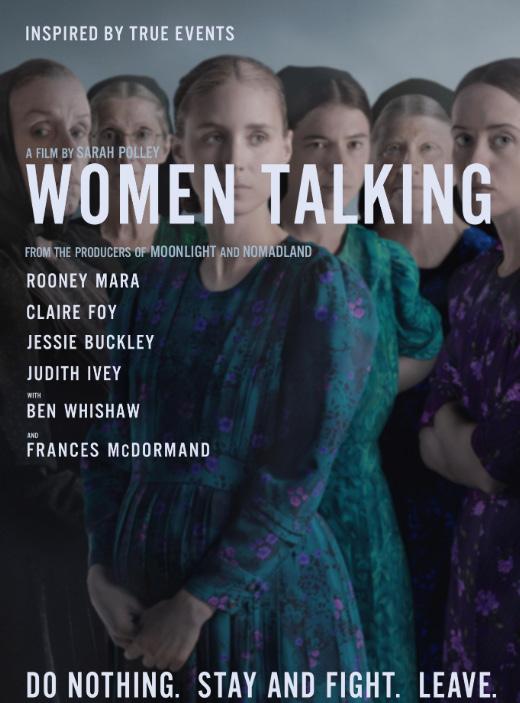

by Sarah Polley:
Canadian filmmaker and writer Sarah Polley's film is based on newly established American colonies. It follows a group of American Mennonite women who discuss their future, following their discovery about men's history of raping the colony's women. Released in 2022, the movie is a democratic conversation between the women of the colony thinking whether to leave the colony or stay. The question might seem easy but they measure the grave consequences of both decisions. While staying might mean being subjected to continuous rounds of rape and a doomed future for their children, leaving isn't a great option either as they do not know the world beyond their colony.
After contemplation and voting, the women opt to leave the colony along with male children below the age of 13. The ending is an exodus of women, in hopes for a better future. Or at least, better than what they have in the colony. The film is only a conversation but reveals a lot about the unequal power equations that exist in a society.


by Konkana Sen Sharma: Set in 1979 in McCluskieganj, Jharkhand, an old Anglo-Indian town, two men, Nandu and Brian, witness a dead body in the back of their car and discuss the next course of action. They then drive away with a third person, Shutu, who is sitting in the backseat of the car. The film then resumes with events from a week prior. Indian director Konkana Sen Sharma's movie, which was released in 2016, explores the dynamics of ignored mental health in Indian homes. With an inverted gaze, the film targets Shutu, who ends up committing suicide after his father's death. He is a largely ignored entity in the film, and his emotions are often meddled with. Sharma presents a non-masculine view of the male protagonist.


by Anvita Dutt:
A psychological drama by Indian filmmaker Anvita Dutt, Qala explores the dynamics of
In the narratives carved out by men, women have often been depicted as sexual objects of desire. Women, in turn, focus on a softer gaze towards women and touch upon subjects that are mostly ignored
a troubled mother-daughter relationship. In the backdrop of a family known for its music, the mother of the family hopes to have a son to carry on her line of signing. Her dream, however, is shattered as the female twin becomes responsible for the death of the male twin at the time of birth. The girl grows up to be a trained singer and yet, is never enough for her mother. In the course of time, a male singer crosses the door of the family and is immensely loved by the mother. She treats him as her son. While he's at the peak of his success, the female lead does something mindlessly to fiddle with his voice. In pursuit of gaining her mother's recognition, she costs him his life. Engulfed by guilt, she lives the rest of her life considering herself responsible for his death. Dutt's film explores the deep unexplored dynamics of mental health issues through magic realism.


Based on the eponymous fashion dolls by Mattel, it is the first live-action Barbie film that has been released after various animation titles. Directed by Greta Gerwig, this fantasy-comedy, which was released in 2023, stars Margot Robbie as the title character and Ryan Gosling as Ken. The film follows them on a journey of self-discovery through Barbie-land and the real world amid an existential crisis. Regarded as too 'cliched' and 'girlie' to watch, Barbie has been given the credits to uphold the values of femininity as no film has done before.



Often, an individual spends a lot of time lost in a cacophony composed of regrets from the past and worries of the future, losing out on the true gift of time: the present moment. Isn't it?
Dr. Manjula Vijh
Take a moment to pause and think about what goes through your mind throughout the day. Whether you are at work, at home with family, or even when you are on a holiday; have you observed yourself thinking about your life, the never-ending thoughts of the past and the future that cloud your mind? If yes, then you are not living in the moment, my friend!
In a world that incessantly pushes one to dwell on what has passed and prepare for
what's ahead, the importance of living in the present moment is frequently neglected. Whether it's career growth, financial security, or personal goals; one is often caught in a vicious cycle of ruminating on past experiences, including regrets and missed opportunities, and constant planning for the future. This relentless focus on what has already happened and what lies ahead can prevent one from appreciating the true gift of time, the present moment.
Embracing the 'now' can lead to a more fulfilling and balanced life. By focusing on the present scenario, you allow yourself to fully experience and appreciate the richness
of your immediate experiences. This shift in perspective enables you to discover joy and meaning in the simplest aspects of your daily lives — be it the warmth of the morning sun, the company of your loved ones, or relishing your favourite food.
Living in the moment encompasses fully engaging with the current situation. It involves being consciously aware of your thoughts, feelings, and surroundings without casting any judgments. This state of awareness enables you to experience life more profoundly and authentically. By focusing on the here and now, you free yourself from the distractions of
what has occurred in the past or what might happen in the future.
Embracing the present moment offers a wide array of benefits that enhances one's mental, emotional, physical, and relational well-being. Let's explore the various benefits of living in the present in detail:
One of the significant benefits of being fully aware is reduced stress and anxiety. Through mindfulness, you can reduce the impact of negative thoughts and feelings related to past events or future uncertainties. This can lead to a more positive and stable mental state. Studies have demonstrated that mindfulness practices, such as meditation, can reduce cortisol levels, the body's primary stress hormone. Mindfulness practices enhance one's cognitive function as well.
Being in the moment increases self-awareness, allowing you to gain a deeper understanding of your thoughts, emotions, and behaviours. Self-awareness helps you identify and address negative patterns, fostering personal growth and self-improvement. This emotional regulation reduces the likelihood of impulsive reactions and helps you handle difficult emotions, such as anger or sadness, with greater clarity and calmness.
Being present with others allows for deeper and more meaningful connections. When you are fully present in conversations, you can understand and respond to the needs and feelings of others more effectively. This presence builds trust, intimacy, and mutual understanding, enhancing the quality of your relationships. It also helps you approach conflicts with a calm and composed mind.
Living in the present can enhance your focus and productivity. By concentrating on the task at hand, you can be more efficient. This focused mindset helps reduce procrastination and
improves your ability to achieve your goals. When you are mindful, you are less likely to be distracted by irrelevant thoughts or external interruptions, allowing you to devote your full attention to your tasks.
Mindfulness encourages you to notice and appreciate the minute details of your daily life. This awareness can foster a greater sense of gratitude and contentment as you learn to find joy in simple pleasures and everyday moments. By savouring the present, you can cultivate a more positive outlook on life and a deeper connection to the world around you.
Mastering the art of living in the present requires practice and intentional effort. Here are some practical strategies to help you cultivate mindfulness in your daily life:
Meditation is an effective and powerful tool for cultivating mindfulness. By dedicating time each day to meditate, you can train your mind to remain focused on the present moment. You can start with just a few minutes a day and gradually increase the duration as you become more comfortable with the practice. Creating a routine is the key to an efficient meditation practice. This could be the first thing in the morning to start your day with calm and clarity or in the evening to unwind and reflect. There are different guided meditations and mindfulness apps available that can be helpful to beginners.
Integrating mindfulness into your daily routine can help you stay grounded and fully engaged in the present moment. While eating, take the time to relish each bite. Pay close attention to the flavours, textures, and aromas of your food. Use all your senses to appreciate your meal. While walking, focus on the sensation of your feet touching the ground. Be aware of the rhythm of your breath as you walk. Incorporate mindful breathing into various activities throughout the day. Whether
you're sitting at your desk, waiting in line, or lying in bed, take a few minutes to focus on your breathing. Take time to observe the environment with fresh eyes. Whether you're in nature or at home, look for details you might usually overlook. By incorporating mindfulness into these daily activities, you can transform routine moments into opportunities for presence and appreciation.
Multitasking can fragment your attention and make it difficult to stay present. Instead, try to focus on one task at a time. This method not only boosts productivity but also allows you to engage more fully with each activity. Set specific times for different tasks and use tools like to-do lists or timers to manage your focus.
Keeping a gratitude journal can help shift your focus to the positive aspects of your life. Each day, jot down a few things you are grateful for. This practice encourages you to recognise and appreciate the present moment, fostering a sense of contentment and joy. Reflecting on the things you are thankful for can help you maintain a positive mindset and reduce feelings of dissatisfaction or negativity.
If you find yourself constantly worrying about the future, designate a specific time each day to address your concerns. During this designated time, write down your worries and potential solutions. By confining your worries to this allocated period, you can free up the rest of your day to focus on the present. This technique can help you manage anxiety by creating a structured approach to deal with your concerns, rather than allowing them to dominate your thoughts throughout the day.
While it may take time and practice to develop a mindful mindset, the rewards are well worth the effort. While you're in this world, appreciate its beauty, live each moment fully, and appreciate the true gift of life, the present moment, in its full glory. As you begin to do so, you will realise each moment is special in its own way.











Indian shooters Sarabjot Singh and Swapnil Kusale get candid about their bronze medal wins at Paris 2024 and how their Olympic journey has just begun
There's no better moment in the life of a sportsperson other than hearing their country's national anthem being played and flag being hoisted at an international sporting event. If one is able to do so, they know that they have become the world's best by outperforming other competitors.
Olympics is one such event where even the crème de la crème are unable to leave an impression at times. The quadrennial event brings with it intense action-packed moments that are not only riveting but are also someone's success stories that linger on for generations.
In this exclusive interview with City Scope, we get a sneak peek into the lives of Indian shooters Sarabjot Singh and Swapnil Kusale who brought laurels to the country at the recently concluded 33rd edition of the Olympic Games that was held at Paris.
Sarabjot Singh, who made his Olympic Games debut at Paris 2024, won bronze along with Manu Bhaker in the 10-metre air pistol mixed team event.
How does it feel to come back home victorious? It feels really good to have won a medal for the country. The warm


reception that I received on my return was exceptional. It's hard to explain it through words. When I got home, my mom hugged me and congratulated me for my performance. It was my debut Olympics and I feel proud to have won my maiden Olympics medal.
What was the thought process during the bronze medal match against South Korea?
The thought was to give my best and not worry about the outcome. Both Manu and I wanted to keep giving our best till the very end. It was a tough match-up and all I wanted to do was stay focused. I tried to forget what happened in the previous shot and concentrate on the next one. Fortunately, we were able to execute well.
Swapnil Kusale, who became the first Indian shooter to qualify for the finals of the men's 50-metre rifle 3 positions

When you win something, you are bound to be happy. However, my dream is to win gold and that is yet to be achieved. My eyes are set to shoot for gold at the next edition of the Olympics –Swapnil Kusale
before going on to win a bronze in the finals, echoed a similar sentiment when asked about his thought process. After making it to the finals, the preparation was similar like it has been always. I just followed my routine, gave emphasis to my physical fitness, and kept things simple. I didn't have any other thoughts going on my mind or took anything for granted because I had made it to the finals.
During the event, at any point, did you think about the colour of the medal you could win?
I wasn't thinking about the colour of the medal. I just wanted to give my best and make my country proud. Initially, I did see the score and rankings after the first 2-3 shots but after that, the intent was to just give my best and be in the right zone and concentrate on my breathing.
When asked about their future targets, the duo was quick to respond that their goal is yet to be achieved.
"At present, I am going to be on a break for a month. After that, preparations will begin once again. The aim is to bring more medals for the nation," shared 22-year-old Singh.
"My dream for Paris 2024 was something else but I wasn't able to fulfil it completely. I am elated to have a podium finish but I want to win a gold medal for the country. Obviously, when you win something, you are bound to be happy. However, my dream is to win gold and that is yet to be achieved. My eyes are set to shoot for gold at Los Angeles 2028," said 29-year-old Kusale.
Apart from Singh and Kusale, other Indian Olympians who won medals at Paris 2024 include Manu Bhaker, Neeraj Chopra, Aman Sehrawat, and the Indian Men's Hockey Team. Let's find out more about these winners in the next section.

Shebecame the first Indian woman in 20 years to reach an Olympic shooting final, after Suma Shirur in 2004. Bhaker created history by winning a bronze medal in the women's 10-metre air pistol final. The 22-year-old finished third with 221.7 points behind Korean shooters Kim Ye-ji (241.3) and Oh Ye-jin (243.2), who won silver and gold, respectively. With this feat, she became the first Indian woman shooter and fifth India shooter to win an Olympic medal.
In the following days, she went on to secure another bronze along with Sarabjot Singh in the 10-metre air pistol mixed team bronze medal match. The Indian pair won 16-10 against South Korea's Lee Won-ho and Oh Ye-jin. By doing so, Bhaker became the first Indian woman to have won two medals at the same Olympics edition.
Other Indian shooters who won medals prior to Bhaker include Rajyavardhan Singh Rathore who won silver in the men's double trap at Athens 2004, Abhinav Bindra won gold in the men's 10-metre air rifle at Beijing 2008, Vijay Kumar won silver in the men's 25-metre rapid fire pistol at London 2012, and Gagan Narang won bronze in the men's 10-metre air rifle at London 2012. Sarabjot is the sixth Indian shooter to win an Olympic medal.

Witha javelin throw of 87.58 metres at Tokyo 2020 Olympics, Neeraj Chopra became the first Indian to secure a gold medal in athletics at the Olympic Games. In the process, he also became the youngest Indian to have secured gold in an individual event along with being the only Indian to have secured the top spot on Olympic debut.
Before Paris 2024, he was one of two Indians to have won an individual

Olympic gold. The other being ace shooter Abhinav Bindra who won gold in the men's 10-metre air rifle at Beijing 2008. Carrying the entire nation's expectations to defend his title weighed heavy on Chopra's shoulders. While he did give his best, his efforts of a 89.45-metre throw were sidelined by Pakistan's Arshad Nadeem who managed to throw 92.97 metres, setting a new Olympic Record in the process. Nevertheless, the 26-year-old won silver and became the fifth Indian (individual) to have secured two Olympic medals. Norman Pritchard won two silver medals in athletics at Paris 1900 (pre-independence). Wrestler Sushil Kumar won bronze at Beijing 2008 and silver at London 2012. Shuttler PV Sindhu won silver at Rio 2016 and bronze at Tokyo 2020. Shooter Manu Bhaker won two bronze medals at Paris 2024. Chopra won gold at Tokyo 2020 and silver at Paris 2024.
The 21-year-old wrestler, who made his Olympic debut at Paris 2024, won bronze in the 57kg category after defeating Puerto Rico's Darian Cruz by 13-5 VPO1 (victory by points). With this, he became the youngest Indian to have won an individual Olympic medal at the age of 21 years and 24 days. He bettered

PV Sindhu's record of 21 years, one month and 14 days when she won a silver medal at Rio 2016 Olympics.
Sehrawat is the sixth male and seventh Indian wrestler to win a medal at the Olympics. KD Jadhav (57kg) won bronze at Helsinki 1952, Sushil Kumar (66kg) won bronze at Beijing 2008 and silver at London 2012, Yogeshwar Dutt (60kg) won bronze at London 2012, while Ravi Kumar Dahiya (57kg) and Bajrang Punia (65kg) won silver and bronze, respectively, at Tokyo 2020. The only female on this list is Sakshi Malik (58kg) who won bronze at Rio 2016.
Fieldhockey, the most successful sport at the Olympics for India, has a legacy of its own that is unparalleled. India's first gold medal pre-independence as well as post-independence came through field hockey at Amsterdam 1928 and London 1948, respectively.
The sport has brought 13 medals so far including eight gold, one silver, and four bronze. Out of the eight gold, six were won consecutively from 1928 to 1956. Moreover, the Indian team is the only team in the competition's history to have won the Olympics without conceding a single goal at Amsterdam 1928 and Melbourne 1956.
Placed in Group B with New Zealand, Australia, Argentina, Ireland, and Belgium,
As we celebrate the medallists, let's not forget that every Olympian is a champion. Representing your country at the highest level is an achievement that most can only dream of
India showcased some fine skills and teamwork to finish second in the group stages with three wins, one draw, and a solitary loss in the five matches.
In the quarter-finals, India beat Great Britain 4-2 in penalty shoot-outs after the game was tied 1-1 during the stipulated time. India's dream run was halted by Germany in the semis where the Men in Blue were beaten 3-2 in a closely fought contest. The bronze medallists from Tokyo 2020 were then up against Spain in a bid to attain a podium finish.
Spain's Marc Miralles scored the opening goal of the game in the 18th minute through a penalty stroke. The equaliser came through Indian skipper Harmanpreet Singh who scored in the 30th minute through a penalty corner. Singh scored India's second goal and his 10th of the tournament through another penalty corner in the 33rd minute that gave India an unassailable 2-1 lead.
With that, India won bronze and inched a step closer to bringing back the golden days of field hockey. It will be interesting to see whether or not the team is able to upgrade the colour of the medal in the next edition at Los Angeles 2028.
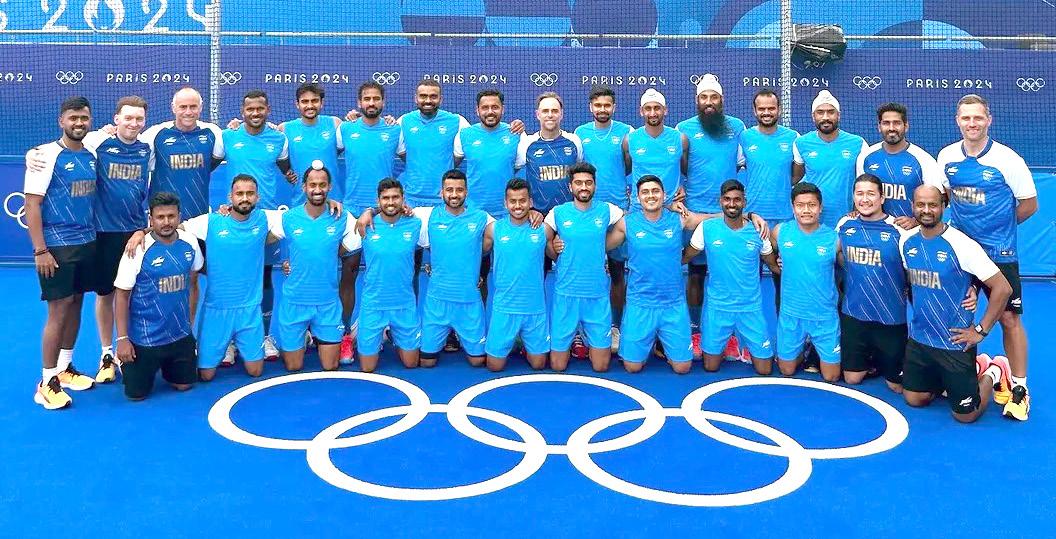
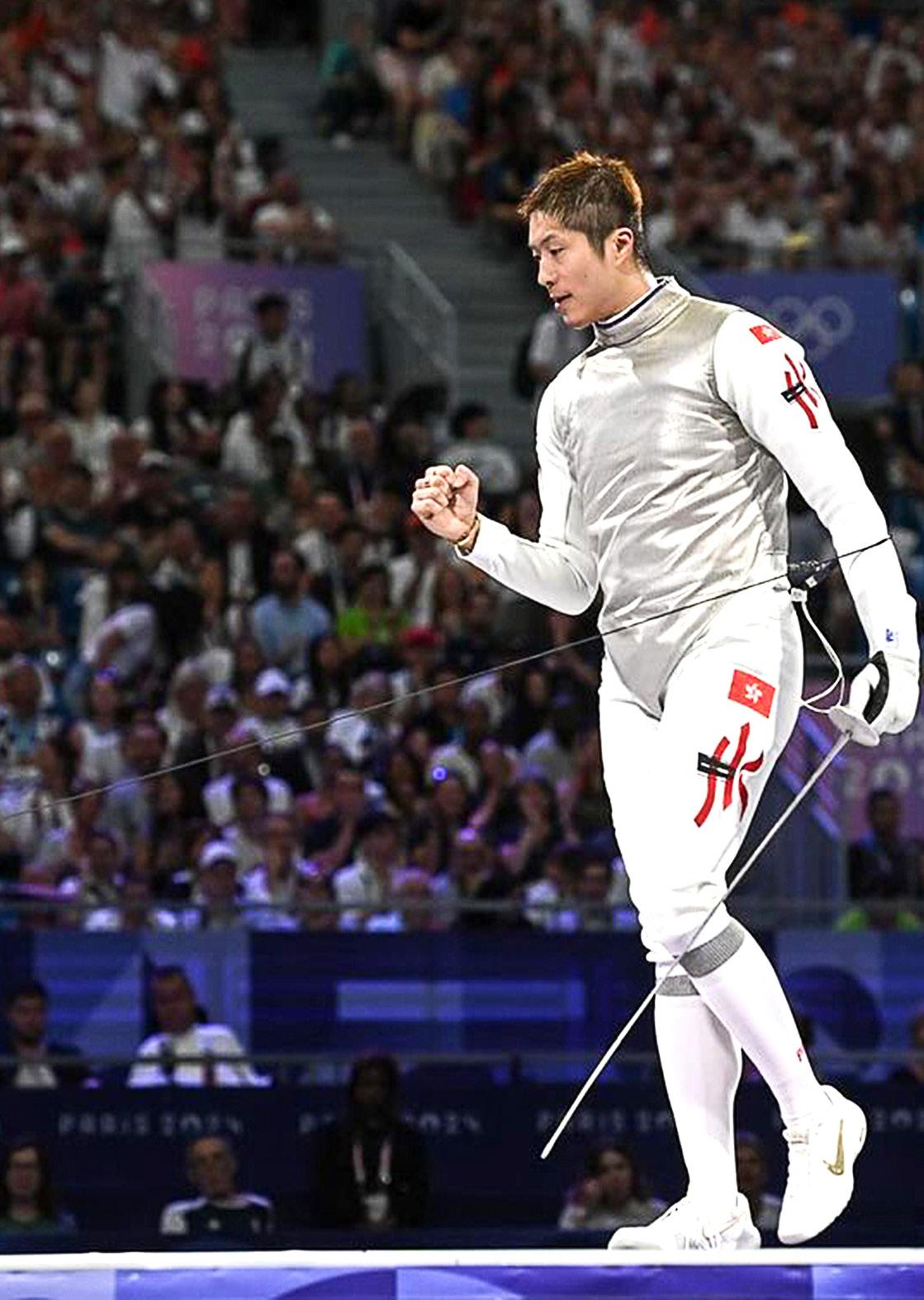

As far as performance from Hong Kong Olympians is concerned, the medal tally of six medals — 1 gold, 2 silver, and 3 bronze — at Tokyo 2020 was reduced to four — 2 gold and 2 bronze — at Paris 2024. Here's a look at the Hongkongers who were able to attain a podium finish.
In2020, Ka-long created history by winning Hong Kong's first Olympic gold medal in fencing and its second-ever gold. The first gold medal was won by sailer Lee Lai-shan at Atlanta 1996. For his achievements, the 27-year-old was bestowed with the Silver Bauhinia Star the highest possible award for an actively competing athlete.
At Paris 2024, the Tokyo 2020 Olympics gold medallist successfully defended his title by beating Italy's Filippo Macchi in the finals of the men's individual foil.
It was a close-contested bout as the margin of error was minimal. At the end of the first period, Ka-long was leading 11-10, however in the second period, Macchi was one point away from securing gold with the scoreline being 14-12.
Ka-long fought back to secure three points and defend his title, making him the only Hong Kong Olympian to have two gold medals. Owing to his success, the city now has four gold medals (overall) at the Olympics.
Siobhan Haughey
2 BRONZE, SWIMMING
Siobhan Haughey became the first Hong Kong swimmer to win an Olympic medal after winning silver in the women's 200-metre freestyle at Tokyo 2020. With another silver in the women's 100-metre freestyle at the same edition, the 26-year-old went on to become the first Hong Kong athlete to win two Olympic medals in any sport.
Before the Silver Bauhinia Star recipient took part at Paris 2024, a lot was riding on her as she is one of Hong Kong's most decorated Olympians and she didn't disappoint. Haughey won two bronze medals —

one in 200-metre freestyle and the other in 100-metre freestyle — to become the only Hong Kong Olympian to have four Olympic Games medals.
100-METRE FREESTLYE
Haughey clocked a timing of 52.33 seconds, 0.04 seconds behind USA's Torri Huske (52.29) who won silver. Sweden's Sarah Sjoestroem won gold (52.16).
200-METRE FREESTYLE
She clocked a timing of 1:54.55, trailing behind Australian swimmers Ariarne Titmus' 1:53.81 and Mollie O'Callaghan's 1:53.27 (new Olympic Record) that helped them win silver and gold, respectively.

FencerVivian Kong gave the city its first gold at Paris 2024 by defeating France's Auriane Mallo 13-12 in the women's epée individual finals. 30-year-old Kong, who is a three-time individual Asian Champion, was trailing 1-7 before drawing level at 10-10.
In a nail-biting finish, she edged past her opponent and secured a 13-12 lead to give the three-time Olympian her maiden Olympic Games medal and Hong Kong's third-ever gold medal. She became the second fencer after Edgar Cheung Ka-long to win a medal for Hong Kong.



As you sit back, relax and lounge in your bed with a warm cup of coffee, a fuzzy blanket, and your favourite movie, you receive an Instagram notification showing your friends partying at a club. Looking at all of them dancing away to the DJ's groovy beats suddenly makes your evening boring. Or does it? Now, that's a question you must ask yourself with sincerity
Dr. Manjula Vijh
Imagine a serene Sunday evening, as you sit at your favourite spot at home, basking in the golden hour, deeply engrossed in a book, or sipping coffee. You open your social media account and see your friend's feed which is buzzing with loads of pictures of exotic vacations, crowded brunch spots, and lively gatherings, and suddenly a feeling of being left out hits you. This fear of missing out is referred to as FOMO.
The phrase 'FOMO' has become increasingly prevalent with the pervasive influence of social media and the constant connectivity it offers. Many people find themselves spiralling into a never-ending loop of comparison, often leading to feelings of restlessness and anxiety. This feeling of inadequacy over missing out on exciting experiences showcased by others often impacts one's mental health. However, there is a quiet revolution brewing, that encourages embracing the joy of missing out, or 'JOMO', crafting a path to peace and joy.
Imagine, instead of feeling left out, you could revel in the joy of missing out! Let us dive deeply into the origins of FOMO, its impact on one's mental well-being and powerful strategies to overcome it, all to embrace JOMO.

Afundamental part of our evolutionary history is the human tendency to seek social connection and belonging. However, in today's fast-paced digital age, this desire has been amplified and distorted by constantly being in touch through social media connections. The perfect lives and exciting experiences showcased by others can invoke feelings of missing out on life's best moments.
FOMO is the feeling of overwhelm or insecurity that arises from the perception that other people are experiencing more interesting or fulfilling things than you are. This constant feeling drives individuals to endlessly scroll through their social media feeds so they don't feel left out. FOMO can originate from a range of sources, including societal pressure to always have the best, curated version of life that people showcase on digital spaces.
FOMO can have a significant impact on one's mental health. If not monitored, it can cause stress, anxiety, and a feeling of not being good enough. Incessantly comparing one's life with others often leads to low self-esteem and low self-confidence. People develop a feeling of lack in their own lives and create negative self-perception. In addition to this, the incessant need to be connected and engaged leads to burnout as one is constantly under the pressure of creating regular updates of their life, showcasing how exciting their life is. FOMO's impact on mental well-being is profound and effectively addressing these effects plays a vital role in cultivating a healthier relationship with oneself, allowing for a more fulfilling life.
So, what should be the first strategy to overcome FOMO? Yes! Limit your time on social media. Have you ever noticed
how you reach out to your phone every few minutes to spend hours in endless scrolling? Imagine what could be done in that time you wasted. Restricting your time on social media reduces your exposure to the portrayals of other's lives, hence lessening the urge to compare your life to others.
Moreover, it gives time for other meaningful and fulfilling activities such as cultivating hobbies or pursuing personal goals. This shifts the focus towards a much greater sense of satisfaction, thereby reducing the need to seek validation from others. You can follow this by setting specific time boundaries to check social media, turning off notifications, and by replacing the time spent on social media with other activities and pursuits.
Start by acknowledging and appreciating what you already have. This can be done through the power of gratitude. Take out time each day to reflect upon things you are grateful for, rather than what you are lacking. This shift in focus creates a greater sense of satisfaction, improves your mood, and develops an abundance mindset. Instead of comparing your life with others, you can learn to count your blessings in life. Gratitude fosters contentment, reducing feelings of envy and jealousy. You can start by keeping a gratitude journal and writing down three to five things you are grateful for each day. Be grateful to others and find joy in simple pleasures of life like watching the sunrise, enjoying a cup of tea, or reading your favourite book.
When you do not have clarity about your goals, you tend to drift towards what others are doing in their lives. When you start prioritising your goals and have a clear plan to achieve your ambitions, you start focusing more on self. Identify your values and priorities and take time to reflect on what matters to you the most.
You can do this by first defining your goals. Once you have defined your goals, break them down into smaller steps and create a plan to achieve those by creating manageable deadlines for each one of them. This keeps you motivated and reduces the distractions. Practice self-discipline and celebrate your progress from time to time as you get closer to your desired results.
When you endlessly scroll social media, you gather a lot of unnecessary information. Your mind gets clouded with thoughts and eventually, it gets too overwhelming. Mindfulness is the practice of being fully present and being aware of your thoughts and feelings. It involves paying attention to the present moment and accepting it without changing it.
Meditation involves training the mind to focus and direct your thoughts. Both mindfulness and meditation can help increase self-awareness and improve emotional regulation. In addition, this also reduces impulsive behaviour like constantly checking social media, impulsive shopping, and saying yes to events out of fear of missing out. These practices can help you cultivate inner peace and resilience in the face of FOMO.
It is crucial to set healthy boundaries and reclaim control over your time and energy when it comes to overcoming the fear of missing out. It involves learning to say no to activities and events that do not align with your priorities or values, allowing you to focus on what is more important for you.
Setting boundaries clarifies your values, preserves your energy and protects your time, eliminating stress and cultivating deeper connections with yourself and others. Understand that you don't have to be present everywhere your friends and family are to enjoy life, sometimes pure joy will reside in your own company.

JOMO is about finding happiness and contentment in the moments when you choose to opt-out, slow down, and focus on what truly matters to you. It is a mindset shift that encourages one to embrace the present moment and find fulfillment in simple pleasures. Embracing JOMO can lead to a greater sense of peace and well-being. It's about recognising that one can't do it all, and that's okay. But the question arises, in this constantly rushing world, how can one find joy in missing out? Here are some pointers to keep in mind:
Embracing solitude and enjoying your own company is a powerful tool for self-discovery and personal growth. This can help you recharge, gain clarity about your thoughts, and reconnect with yourself at a deeper level. Being in solitude also increases self-awareness and enhances creativity among individuals. One can enjoy solitude by setting aside regular alone time in their schedule and engage in self-care activities that they like, be it journalling, being with nature, etc. Solitude is not being in isolation; it's about intentionally choosing time to nourish your body, mind, and soul.
Take a pause and appreciate the present moment. Acknowledge what you already have and feel grateful for that. One way of being present in the moment is to unplug yourself regularly from technology. Take breaks from social media, disconnect yourself from the constant stream of information, and recharge yourself. Focus on the present moment and savour the experiences that you are having, whether you are pursuing a hobby, sipping your favourite coffee, or out on a vacation.
Embrace the idea that less is more! Instead of doing it all, take fewer things and try to do it well. Take this idea to create meaningful connections as well. Invest time in building meaningful connections with others. Quality is often more important than
quantity when it comes to relationships. In the context of JOMO, quality over quantity means choosing to invest your time and energy in experiences, relationships, and activities that align with your values and bring you joy.
In conclusion, overcoming FOMO and embracing JOMO is a transformational journey towards a more intentional, fulfilling life. It's about finding balance in a world that is constantly pulling us in different directions. So, let go of the pressure of doing it all and find joy and happiness in missing out on things that don't align with you!
With a little effort towards knowing yourself, you will be able to better define your likes, dislikes, and priorities. When you set out on this journey and start putting your energies into things that truly matter to you, nothing else will ever give you more happiness than that. It's that easy.
The fear of missing out can have a significant impact on one's mental health. If not monitored, it can cause stress and anxiety. One should understand that they don't have to be present everywhere where their friends are. Sometimes, pure joy can be derived by being alone

Gen Z is not one to sit back and struggle; with its zeal and grit, it is working hard on its financial wisdom — strangely enough, with the help of social media. Is it helpful or not? Let's discuss
Vidhi Arya
Us 90s kids spent years in schools and colleges constantly pressured to build stellar careers, earn considerable incomes, and achieve enough success to enjoy a life full of comfort and luxury.
Now that we've finally arrived, after years of toiling, many of us are dazed about what to do with the money we're earning. Whoever taught us what to do with our earnings, anyway? Where to spend, where to save, how to invest, or even how to file taxes. Many of us had to learn the hard way. But the current generation? They have an entirely different story to tell!
Gen Z, the generation born with a mobile phone in hand and the Internet running through their veins, has a savvy approach. With the bounty of connectivity and information this generation has at its disposal, they've turned to social media and 'finfluencers' to learn money-saving and investment lessons. As advice is available in abundance on various platforms, Gen Z has started putting in their bit to save for their future or for things that truly matter to them.
However, we all know social media is an amazing place for trends but is it an actual knowledge pool? I doubt. While it's fleeting with do's and don'ts, there's rarely context to the many lifestyle factors that finally impact a decision. While investing and saving requires a lot of knowledge, research, and analysis, social media should never be the holy grail for financial literacy. It may be a good starting point.
As Instagram and TikTok offer innovative approaches to saving and investing, they also come with their own

set of pros and cons. Let's explore some popular financial trends at present:
The 100-envelope trend became a huge hit in no time. It requires you to save money for 100 days and with each passing day you save a dollar extra. For instance, on day one you set aside $1, on day two you'll save $2, and so on till you reach the 100th day. This way you'll have $5050 saved by the end of 100 days. This challenge picked a tremendous pace, so much so that businesses selling
specifically designed kits, trackers, and binders started to pop up everywhere.
MY TWO CENTS: While it's great to set aside money like this, ensuring liquid funds for rainy days, the first issue that I see is maintaining consistency and flow for over three months. Secondly, you would need immense self-control. Having such money lying around in envelopes makes it very easy to throw the 100-day plan out the window and splurge. However, if you can tame these limitations, it's a fun gamification to try. At the end of 100 days, you can make a
more informed choice to invest the saved sum, yielding greater results at a later stage.
This trend is the Gen Z version of budgeting but with a more aesthetic sense attached to it. And, that's okay since most money advice is cyclic. As per this trend, the day you get your paycheck, you calculate your expenses and withdraw that amount in cash. Just divide this money into envelopes that represent various heads, such as rent, groceries, fuel, shopping, etc. Over a month, you can only spend what you allocate at the beginning. Once an envelope is empty, you either stop spending under that category or you have to borrow from another category.
MY TWO CENTS: It could be a good way of staying under budget. Our parents did this all the time when cards were not prevalent. The truth be told: while credit and debit cards offer convenience, you can easily exceed the budget with them. If budgeting is your way of life, to be more accountable or to execute a bigger plan later, this trend offers great help as it helps make your expenses 'apparent'. So, if you can keep your cards aside, it's worth a try.
This trend has more to do with your attitude towards money and spending. Loud budgeting encourages you to be very vocal and firm about the financial decisions you wish to make. If you do not want to grab take-away coffee every day and you'd rather make your own, say it out loud, without shame. If you no longer wish to buy all new, trending clothes or every new gadget launched, yes please, 'loud budget' it.
MY TWO CENTS: It's my personal favourite. I think it's high time people stop jumping on band wagons, and spending money that can have a better use for them. Consumerism is consuming us all and the pursuit of a bright social image is pushing us into darkness. At such a time, standing up for what you believe is important in empowering and inspiring. In a world where everyone is chasing material, the ability to say "I will not spend on this" is classy and a real flex. If you can save
With the bounty of connectivity and information that Gen Z has at its disposal, they have turned to social media and 'finfluencers' to learn money-saving and investment lessons. However, are the sources reliable to do so?
yourself from overspending despite ads being shoved into your face every minute of every day, my friend, you've won at life.
The no-spend challenge requires you to mark specific days for yourself where you don't spend on non-essentials. On your 'no-spend days', you cannot spend on non-essentials like clothes, coffee, eating out, entertainment, etc. You're free to choose your non-essentials as per your lifestyle and values.
MY TWO CENTS: Holding back from spending on non-essentials can free up space for more fulfilling things in life. As most purchases we make are driven by impulse rather than need, this trend can prove beneficial in controlling impulsive buying. Taking up this challenge can be instrumental in figuring out what makes your life more wholesome and what gives you joy. Other than that, it's not a sustainable way of life.
In my opinion, these trends are glamourised renditions of the plain-old ways things were done back in the day. And, glamourising generally boring topics has its downside: the interest fades away. Social media trends anyway have a short shelf life, but that approach cannot work with your finances. While many such challenges and fads will come and go, financial literacy stays forever. As you work hard, spend wisely, and save well.
are some quick tips you can keep up with:
1. LIVE BY THE 50/30/20 RULE
This is a simple financial rule that suggests that 50 per cent of your earnings should go towards your needs, such as rent, gas, groceries, etc. 30 per cent of your earnings should be saved or invested. And, the last 20 per cent should be used to afford wants
and luxuries. This rule helps you maintain a balance in your financial decisions and provides a sense of control and security.
2. PUT ASIDE AN EMERGENCY FUND FOR RAINY DAYS
Savings and investments are all great but you need to have an emergency fund that covers three to six months of your living expenses. This need not always be in cash or lying around in your bank but you should be able to liquify it in case of an unforeseen scenario. This fund will always provide you with a sense of stability in this ever-unpredictable world.
3. PAY YOURSELF FIRST
The biggest mistake people make with money is that they wait for the month to end to allocate the leftover money to savings and investments. It's the opposite of what you should ideally do. Every month, as you receive your paycheck, pay yourself first: save or invest an amount that's suitable to you. The leftover amount should be your spending budget. To make it all easier and consistent, automate your savings.
4. DON'T PUT ALL YOUR EGGS IN ONE BASKET
Always diversify your investments. Diversifying your investments is crucial for managing risk and optimising your returns. When you spread your money across various asset classes such as stocks, bonds, real estate, fixed deposits, gold, etc. you minimise the impact of poor performance in any single investment. Simply put; by diversifying, you maintain a secure and stable portfolio where one market fluctuation doesn't hit all your savings and gains, allowing you to capitalise on various market opportunities.
Lastly, you spend a lot of time and energy earning the money that you do. It's your prime responsibility to be vigilant with it and make it grow. Social media might be a great place for advice, but it's not always 100 per cent reliable and there's no guarantee what suits one person will also suit you. Be cautious and do your research before making investment decisions. You know your financial situation and future goals the best, so always do your homework to ensure that the next step aligns with your life path.


With 8 billion people on this planet, all of whom are competing to survive, one is bound to face rejection at some point or the other. Learn how to respond when the chips are down

Diksha Dogra
Have you ever felt that loud blaring 'no'? Or, have you ever felt a throbbing pain in your heart when someone made you feel unwanted and unnecessary? Or, the self-doubt that arose when you thought you had all that was needed but someone popped your bubble to make you realise that maybe you did not.
If you answered all these questions in an affirmative, read this quote by renowned actor Sylvester Stallone: "I take rejection as someone blowing a bugle in my ear to wake me up and get going, rather than retreat."
Rejection is a natural part of both personal and professional lives that everyone encounters. Truth be told, I have
faced numerous rejections in my life so far, and at times, quitting seemed like the only option. However, I chose to keep moving forward, pushing myself towards my dreams. The strategies that I'll be sharing are the ones that I used to overcome rejections. From personal experiences, I very well understand how disheartening rejection can be, but learning to handle it effectively can transform you into an extraordinary individual and open gateways to multiple opportunities in your career.
Let's first understand how rejection affects the mind
Rejection in life can lead to self-doubt, low self-worth, and negative self-talk, causing one to feel incapable and unworthy. I have faced numerous rejections in my relationships, which led me to believe that love was not meant for me. It took me 15 years to realise that this deeply ingrained belief shaped my experiences.
Emotional pain from rejection, such as feelings of sadness, anger, and anxiety can be as intense as physical pain. The trauma is so severe that many individuals often give up after being rejected a couple of times and even avoid future opportunities altogether as their past experiences weren't great as they don't want to undergo the same emotions again.
Behavioural changes resulting from rejection mostly serve as protective mechanisms to shield oneself from further emotional pain. While these behaviours may provide short-term relief, they can lead to long-term issues such as isolation, chronic stress, and difficulty forming authentic connections. To prevent vulnerability, one tends to confine things and becomes cautious so that they don't get exploited.
Any kind of rejection can lead to living in fear, causing every step you take to be driven by desperation. When you dwell on fearful thoughts, you attract more of the same, sustaining a cycle of anxiety and hesitation. Remember, rejection doesn't mean you aren't good enough. It simply means the other person failed to notice what you have to offer.
If you're sailing in the same boat, here are some effective strategies to handle stress
The first step in handling rejection is to accept what you are feeling. It's natural to feel disappointed, sad, or even angry. Suppressing these emotions can lead to greater distress over time. Journal your feelings or talk to your friends and family members about it.
Rejection often feels personal, but it's important to recognise that it usually isn't. Taking it personally can impact your mental well-being. Let it go by asking yourself a few questions such as, "is it really worth my time?", "how am I supposed to do better if I remain stuck in self-pity?", "what lessons have I learnt and how can I use it in the future?", "how should I make a new strategy to bounce back?", among others. By asking these questions, you shift from a state of assumption to one of empowerment, actively creating the outcomes you desire.
3PAUSING
Pause and remind yourself of your strengths, achievements, and the qualities that make you unique. Engage in activities that boost your confidence and make you feel good about yourself. Surround yourself with supportive people who uplift and encourage you. This is very important to
Rejection is a natural part of both personal and professional lives that everyone encounters. It can lead to self-doubt, low self-worth, and negative self-talk, causing one to feel incapable and unworthy. Instead of seeing it as a failure, consider it as a learning experience or a stepping stone towards future growth. So, give yourself the necessary pep-talk and channelise your energies in the right direction
break the trap of victim mode. Give yourself the much-needed pep-talk and channelise your energies in the right direction.
Reframing is a powerful tool for changing an individual's perspective on rejection. Instead of seeing it as a failure, consider it as a learning experience or a stepping stone towards future success. Many human beings, even those who have gone on to become millionaires or celebrities, faced numerous rejections before achieving their goals. Rejection can build resilience, teach you important lessons, and redirect you towards opportunities that can be life-changing.
Energy grows where focus goes. If you keep focusing on rejection, it can leave you feeling powerless and hopeless, but focusing on what you can control can help you a lot. As mentioned earlier, change your strategies and take inspired action to improve yourself.
Rejection can be a setback but it doesn't have to be the end of the road. Keep yourself inspired and never stop pursuing your goals. Every rejection brings you a step closer to finding the right path. Stay persistent and be receptive to new opportunities. Remember, every 'no' brings you closer to a 'yes'.
Many successful individuals such as KFC founder Colonel Harland Sanders, actors Chris Pratt and Jim Carrey faced numerous rejections but never gave up on their dreams. Their persistence and determination led them to great heights in their respective fields. If they had taken rejection personally, their stories would have been far less remarkable. Instead, they used each setback as a pathway to improve and comeback stronger. Avoid the negativity trap, motivate yourself to do your best by believing in your abilities, and create a future worth remembering. Rejection is a part of the journey as it teaches you to be stronger. The next time you feel that you are not good enough for someone, remind yourself that you are good enough for you and at the end of the day, that is all that matters.



As humans, we tend to lean towards finding a spec of light in darkness but when it comes to living our lives, how dark are the choices we make from minute to minute? Ever thought about it?
Gauri D
Morbid curiosity, it's a term often heard in obscure movies and TV series.
But do we really know what it means? What effects does it have on our lives? And what makes us morbidly curious? Let's take a look.
Morbid – adjective. characterised by an unusual interest in disturbing and unpleasant subjects, especially death and disease.
Curiosity – noun. a strong desire to know or learn something.
The success of horror movies and the rising fame of true crime shows is a true
marker of our morbidly curious tendencies. Even though there has not been sufficiently enough research on this particular human tendency, there is a 24-item morbid curiosity scale that is used to determine how much we lean towards dark content. Every human has a certain level of dark curiosity. Wanting to gossip about co-workers and exes is perhaps the lowest form leading up to some serious stuff.
The corporates have now found a way of encashing this psychological phenomenon and not just with podcasts and docuseries. Here's how:
The Propeller Island City Lodge in Berlin, Germany, offers hotel rooms with coffins to sleep in. If that isn't enough, you can close the lid on the coffin with just some gap to facilitate breathing. The hotel also offers its customers 32 unique nightmarethemed rooms if coffins don't float your boat. These themes range from multiple mirrored rooms to straight-out-of-anightmare cage rooms.
After-death scenarios, especially 'hell' have intrigued many over centuries. While every culture has a different interpretation of hell; Haw Par Villa in Singapore takes its guests through 10 courts of hell complete with gory, bloody and fleshy details. Another such example is Wang Saen Suk Hell Garden in Thailand. Both are based on the Buddhist concept of hell and offer a unique experience to their customers, young and old.
Taking it up a notch, the dark web tops the list of topics on the morbid curiosity scale. Many have encountered not-so-horror elements of the dark web while others have steered clear of it, there is an elite online group who have made careers out of reporting horrors of the dark web and experiencing them for entertainment.
One such example would be ordering mystery boxes from the dark web. Some receive unharmful yet disgusting stuff, some receive a cursed doll, whereas some have received genuine horror elements including murder weapons and victim hair and blood samples.
Many have encountered threats and creepy messages, but sometimes even that isn't enough to deter the ones on the path to curiosity.
Another great example of morbid behaviour, in general, would be the fangirl moment of Ted Bundy. While he may have garnered a huge female fanbase despite committing heinous crimes against the gender, he isn't the only serial killer to receive fan mail in

Every human has a certain level of dark curiosity. The success of horror movies and true crime shows is a true marker of our morbidly curious tendencies
his jail cell. There are many cases of killers and rapists receiving a grand fan following despite the vicious nature of their actions. The phenomenon of 'maybe he will be a different person from me' might arguably be one of the most dangerous effects of morbid curiosity.
The 'curious cat' might be the same as Schrodinger's cat. We keep saying curiosity killed it, but to what end? After all, aren't there nine lives of a cat? Besides whoever saw the body? If curiosity had indeed killed the cat, one might think it is enough to keep others away from being overly curious. But the rampant presence of morbid curiosity suggests otherwise. Many believe that the things we do to satiate our morbid curiosity have no effects on regular life. Not really. After all, listening to true crime while sleeping is just calming, nothing much. However, it profoundly affects the way we interact with our fellow humans on a day-to-day basis. It forms biases in our minds about a certain way someone looks at us, and certain interactions that seem off. There have been cases of people acting on their morbid fantasies simply by repeatedly listening or watching crime and horror on a regular basis. We have all read those headlines where a certain crime
was inspired by a certain online series. While it's not new, it is on the rise because of the ample availability of dark content. Besides, they keep making the shows because we keep watching them. No one really thinks of the aftermath of it all.
Having said all that, there really are some great shows and movies that each one of us enjoys. Not that recommendations are required; but here are some series that you might want to give a try.
• The recently released 'Talk to Me' is all the goddess of curiosity meets supernatural forces.
• The latest Hindi movie 'Shaitaan' opened new avenues into the horror world.
• 'X', loosely based on a true crime back in the day is for all the gore fest fans.
• 'Girl in the Basement' is a genuinely horrific true story that keeps getting worse by the minute.
• 'Missing' is a fast-paced story that we can all relate to in the technologically advanced world.
• 'Se7en' is one of the classic movies apart from 'American Psycho' which is a must-watch.
• 'Unlocked' is a Korean masterpiece that we can all relate to in a very morbid way.
• 'The Glory' is another Korean series that deals with bullying and many other horrors of the society.
And, with that, my only parting words are "Everyone has a little morbid curiosity to satisfy" — Cult of the Weird.



As each turn in life presents a new situation, having a good grasp of emotions can set the tone for overall well-being. While one cannot control the inconveniences and joys of life, managing emotions can make a significant difference
Sahiba Chadha
The world you live in and the life you lead, would constantly introduce you to new people and experiences. While some of these would bring immense joy to you, others would leave you baffled and bewildered, with a gush of innumerable emotions jumping and raging in your head, leaving you distraught.
While you cannot control your experiences with your surroundings, you surely can learn how to manage your emotions better. Only then you can truly leverage the beauty of this world without being affected by the little specs of dirt here and there.
Canadian-American motivational speaker Brian Tracy said, "You cannot control what happens to you, but you can control your attitude towards what happens to you, and in that, you will be mastering change rather than allowing it to master you." And, that's exactly where emotional intelligence comes into picture.
Having the basic aptitude and ability to interpret, demonstrate, perceive, evaluate, and control emotions to communicate with others and relate with others effectively is termed as emotional intelligence.
For the uninitiated, it is essential to express and regulate your emotions and at the same time, have the ability to understand, interpret, and respond to other people's emotions as well. To be successful in life, it is vital to have both intelligence quotient as well as emotional quotient as one has to deal with human beings for all needs, be it personal or professional.
To be emotionally intelligent, we first need to decipher what all it comprises. There are four levels which collectively enhance emotional intelligence in people:
PERCEIVING EMOTIONS
The first step in understanding emotions is to become aware of them accurately i.e., to understand them appropriately. It also involves understanding non-verbal signals such as body language, facial expressions, tone of voice, and gestures.
REASONING WITH EMOTIONS
The second step involves using emotions
to promote thinking and logically acknowledging one's feelings. Emotions help prioritise what one pays attention to; an individual responds emotionally to things that garners their attention.
The emotions we perceive can carry a variety of meanings and reasons. If someone is expressing anger as an emotion, the observer must interpret the cause of the person's anger and what it might mean. For example, if your spouse is angry, it might mean that they are dissatisfied with you in some way, or it could be because they got a speeding ticket on their way to work that morning, or that they were scolded by their boss. Try to identify the reason behind the emotions.
The ability to manage emotions effectively is the most essential part of emotional intelligence. Regulating your emotions as well as appropriately responding to people's feelings are integral aspects of emotional management.
Now that we have understood the four levels of emotional intelligence, let's learn its importance and how it can be useful. It helps improve one's overall mental health and well-being, builds better bonds and relations — personally and professionally, makes children more aware and saves them from being bullied, and promotes a more holistic, mindful way of living. Emotional intelligence plays a huge role in daily lives, here's a look at some of the examples:
It's essential to express and regulate one's emotions and have the ability to respond to other people's emotions as well. To be successful, one needs to have both intelligence and emotional quotient
Emotionally intelligent people are well-equipped to understand and analyse their own emotions as well as those of others. They understand what and why they're feeling a certain way. Consequently, they become adept at responding to a situation in a calm and controlled manner. If an individual is able to maintain their composure in aggravated situations, they are likely to diffuse the tension.
A major part of emotional intelligence is developing empathy — the ability to imagine how others feel by understanding their state of mind. By doing so, you can relate to the other person's feelings and are able to respond in an appropriate manner.
To practice emotional intelligence on a daily basis, you can try the following:
• Be empathetic towards others at home or your workplace
• Accept criticism and take responsibility
• Forgive yourself and others for mistakes
• Say no and set healthy boundaries
• Develop the ability to share your feelings with others
• Understand why you take certain actions
• Avoid being judgemental at all times
cues need to be understood while trying to understand underlying emotions and feelings. Observe the body language and gestures while you listen. All these things can help you interpret emotions better.
Try putting yourself in other people's shoes and understand where they are coming from and what is their point of view. When you start feeling what they might have felt, you become graceful. The clarity helps in keeping thing calm and you tend to be more receptive towards multiple emotions and feelings.
Understanding how emotions influence one's decisions, behaviours, and actions allows to see beyond surface actions. One develops the ability to think about how other people respond by assessing the role their emotions play. If there are unseen factors contributing to certain feelings, one needs to analyse as to what they might be experiencing because of them, and how your emotions might differ from theirs, or how the situation can be controlled.
As one explores all these questions and scenarios, one becomes empathetic towards others and is emotionally available to neutralise the possibilities of a heated outcome. The only downside is, emotionally intelligent people are often taken for granted owing to their composure and the fact that they seldom spiral out of control.
• Become a good listener
OF PAUSING
Anyone who is emotionally aware knows that emotions can be really overpowering but are also temporary. So, whenever an event results in an emotional rush, an emotionally intelligent person will always pause before responding or reacting. This entire act of pausing allows them time to understand the true reason behind those high emotions. They would be able to rationalise the various factors surrounding the situation. This will prevent unwarranted reactions and keep the situation under control.
• Always be kind
If you are someone who is already exercising emotional intelligence but want to level up, here are a few suggestions that will help:
Listening is a skill that very few can master in this fast-moving world with an ultra-low attention span. If your intent is to understand what other people are feeling and saying, you need to start listening and pay attention. Both verbal and non-verbal
Emotionally intelligent people tend to be self-aware, empathetic, expressive, and perceptive. They are good at regulating their emotions and staying motivated as they work towards their goals. They also have strong social skills and can use their understanding of emotions to communicate effectively. While some people hone these skills naturally, you can learn and practice how to become an emotionally intelligent person.
In times of artificial intelligence, the world needs more of emotional intelligence. Give it a shot to see how you can add value to your life and to that of others. Maybe the next time you pause and analyse your feelings before reacting, it changes the course of the rest of your life.

We are living through life's humdrum on an auto-pilot mode: wake up, work, sleep, repeat. With a little mindfulness, one can bring coherence to their monotonous routine. Here's how
Diksha Dogra
Ihad never heard the term mindfulness until I got diagnosed with thyroid. When I saw my report, I was amazed, and I started digging into this ailment and as to why it happened. Eventually, I discovered that its root cause is stress. An unstable job that demanded a lot
physically as well as mentally, along with several responsibilities to fulfill, led to a stressful environment. I had adopted unhealthy habits, including my eating and sleeping patterns. Hence, the diagnosis worked as an unpleasant awakening.
That is where I learnt about mindfulness through the book 'The Power of Now' by Eckhart Tolle. An insightful read, the book pushed me to practice mindfulness,
but unfortunately, I was not very consistent. Nearly two years later, I got diagnosed with PCOD (polycystic ovarian disease), another hormonal disease. And, guess what? One of the main causes of that, too, is stress. I was devastated. I started feeling dejected, my productivity dropped, and life felt burdened with challenges.
Someone back then suggested I should meditate, and what other option did I
have but to try? As I started practising meditation, I decided that I had to change my life for the good.
When I have the power to heal others, I can heal myself too. So, along with meditation and a few other holistic wellness practices, I started my mindfulness journey once again. Since then, the results have been overwhelming in a positive way to say the least. Moreover, it is not just me, there are many who experience stress on a daily basis and are unable to cope up. If it is a hard relate for someone who is reading this feature, then continue reading. I assure that mindfulness, the practice of being fully present and engaged in the moment, can transform an individual.
Benefits of mindfulness:
1 IMPROVED FOCUS:
Most of us are multitasking which affects our focus and the quality of work that is delivered. Mindfulness trains the brain to focus on one thing at a particular time, reducing the tendency for multitasking and distractions. Improved focus can increase the productivity and efficiency of our work, be it personal or professional.
2 EMOTIONAL REGULATION:
By becoming more aware of their emotions and feelings, one can stop dwelling on them and make effective decisions even in stressful situations. Mindfulness helps one avoid impulsive reactions, improves their interpersonal relationships and workplace dynamics.
3 EFFECTIVE DECISION-MAKING:
Due to a lot of pending work, the mind, consciously or sub-consciously, is always switching from one task to another. By being mindful, an individual will be attentive in the present moment and listen to each and everything that is being shared. In return, this helps in better decisionmaking, enabling individuals to consider all aspects of a situation and make well-informed choices.
4 NO STRESS AND ANXIETY:
Mindfulness, as mentioned in the beginning, has been proven to be one of the most effective ways to reduce stress and
Mindfulness helps one avoid impulsive reactions, improves their inter-personal relationships and workplace dynamics. By integrating such practices into the workplace, organisations can develop a more balanced, resilient, and innovative workforce. Also, individuals can develop a productive and meaningful work-life that is wholesome
anxiety. Everything including journalling, affirming, and meditating revolves around being in the present moment because most of the given problems are either in the past or assumed future. Being in the moment is divine where there is no stress or anxiety.
5
BETTER CREATIVITY:
When one is aware, they remain focused on what is to be done and how the tasks are to be executed creatively. As soon as an individual's mind becomes occupied with other things, they tend to lose focus. Hence, the desired results are not obtained as no creativity can stem from such a scenario.
It is often said that the best way to capture moments is to pay attention. This is how one cultivates mindfulness. By adopting this technique, one can excel in any desired field. In this article, I'll share a few tips as to how one can practice mindfulness at work.
Mindfulness at workplace:
1
MINDFUL INTENTION:
Before starting any work, put out an intention regarding how one would feel once they have finished the task. For most of us, our day at work commences with a lot of stress. Now, it is important to remember that energy grows where focus goes. If an individual channelises their energy on stressful factors, more stressful experiences are likely to happen. Start the work with happy thoughts, be grateful and satisfied with whatever is achieved. If someone's focus shifts towards negative emotions, they should remind themselves about their initial intention when they undertook the task and work calmly towards the desired goals.
2
MINDFUL BREAKS:
In this digital era, one tends to move from one digital application to another in the blink of an eye, inadvertently avoiding being in the present. Taking a mindful
break is imperative for improved focus and desired results. Even a few minutes of deep breathing or a quick meditation session can reset the mind and reduce stress. One should also encourage their peers to have mindful breaks as it will help everyone in delivering quality work.
3
MINDFUL MEETINGS:
There have been numerous instances when I have been so lost in my thoughts or been occupied on my phone that I ended up missing the key pointers in a meeting. The reason why this happens is because the individual is not paying attention and is easily distracted by other factors. To avoid this, take a deep breath and keep the phone aside when in a meeting. This practice fosters better listening and leads to more productive discussions.
4
MINDFUL WORK:
When one is swamped with work, they should use the 45-15 technique which means 45 minutes of dedicated work without any distractions followed by 15 minutes of mindful break. Repeat this cycle to significantly improve the quality of work. Constant distractions can extend tasks that hardly take time into a full day's effort.
5
MINDFUL END OF THE DAY:
It's crucial to end the day with gratitude. Ending a day with complaints, anger, or stress can perpetuate a negative cycle. To break free from this pattern, one should be mindful of how they conclude their day, ensuring that the next day begins on a positive note.
The impact of mindfulness at work extends beyond individual well-being, resulting in improved decision-making and enhanced workplace dynamics. By integrating such practices into the workplace, organisations can develop a more balanced, resilient, and innovative workforce. Also, individuals can develop a further productive and meaningful work-life that is wholesome.

Asmita Anand

In today's rapidly evolving tech landscape, a question that has crossed the minds of several workers is, "will a robot replace me?"
Given the pace at which newspapers flash news of new robots and Artificial Intelligence (AI) doing a whole lot of unthinkable stuff, it is only logical to be fearful. Afterall, they can type articles, churn data, create mesmerising images, serve at a restaurant, build a car, and whatnot... the list is endless.
But wait, fear not, this isn't another doomsday prediction. All I want from you is to detach from the fear for a bit, flip the coin to the other side and discover how AI is reshaping our jobs and why you might end up loving your new robot co-workers. Imagine waking up one day to find
your office filled with robots — beeping, whirring, and doing your job. Sounds like a sci-fi movie, right? AI and automation are less about replacing humans and more about transforming our workspaces into hubs of efficiency and creativity. Think of AI as your trusty sidekick, taking over repetitive tasks so you can focus on what you do best.
AI isn't just about automating; it is about innovation. Picture new roles such as AI ethicists ensuring robots behave ethically, virtual reality designers crafting immersive digital experiences, and data detectives uncovering hidden patterns in big data. These aren't just jobs of the future — they're happening now. Instead of taking your job, AI is more likely to augment your abilities, making you a supercharged version of yourself.
While AI can perform many tasks, there are certain things it can't do as
well as humans. Think about what you do at work that requires a human touch — brainstorming creative ideas, understanding a client's emotions, or making ethical decisions. These are exactly the skills where humans outshine AI. Your emotional intelligence, creativity, and nuanced thinking are irreplaceable. AI can handle data, but it can't replicate human intuition and empathy.
To thrive in the age of AI, it's essential to adapt and embrace new technologies. Staying curious and keeping up with the latest developments in your field will keep you relevant. Whether it's learning to code or mastering virtual collaboration, there's always something new to discover. Embrace AI as a tool that can enhance your abilities, not replace them.
So, is AI going to take your job? Probably not. Instead, it will change the nature of work, creating new opportunities and challenges. The future is going to be full of excitement and curiosity, and who knows what amazing opportunities lie ahead! The robots may be coming, but with the right attitude and a little bit of human ingenuity, the future looks brighter than ever. Ready to welcome your new AI colleagues? Who knows, one day you all can go for dinner and drinks together after a hectic work day.
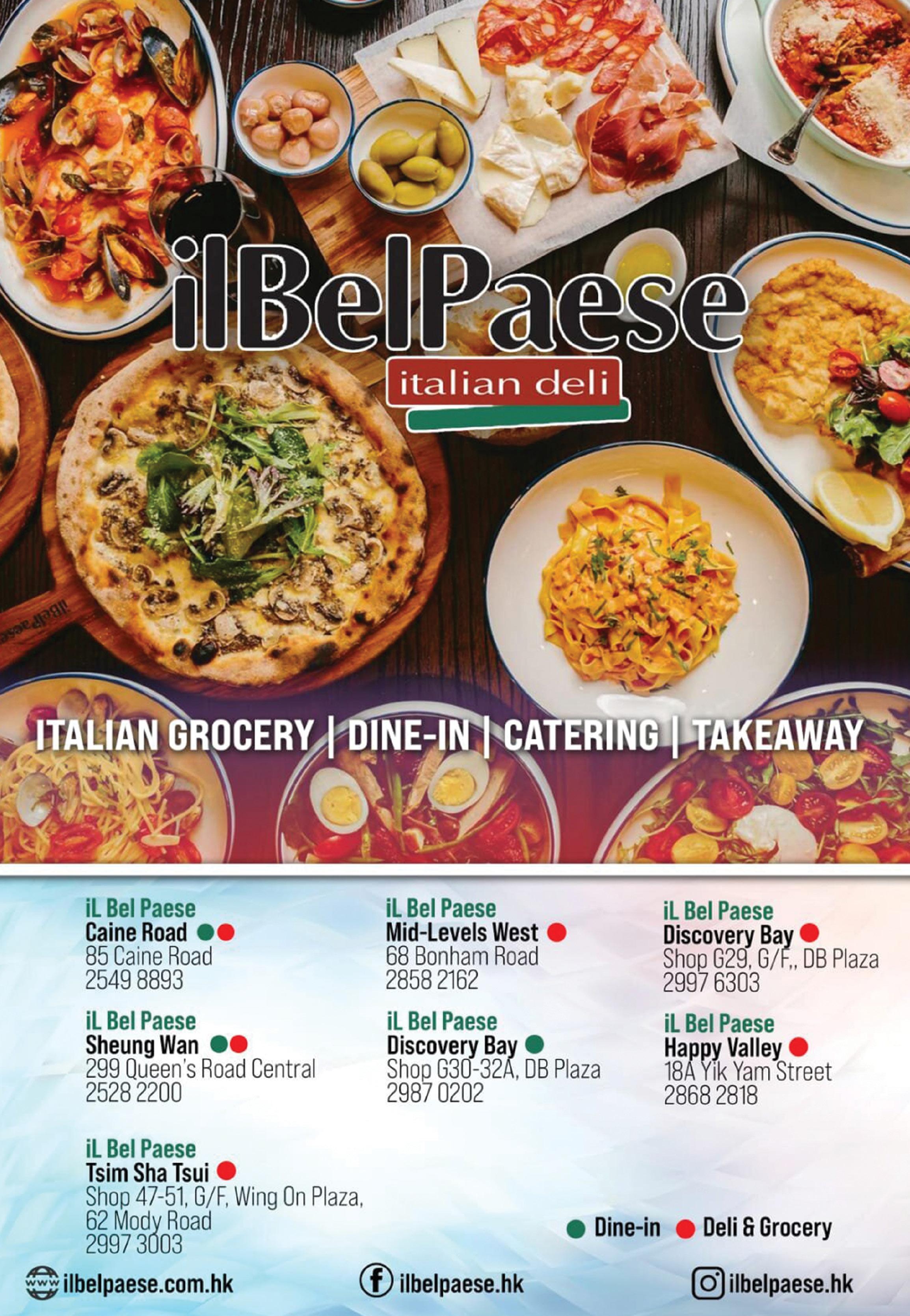

One often forgets to count their privileges and look around others with an empathetic lens. As tolerance is decreasing rampantly, there's a name for this phenomenon — Karen

Gauri D
What does the term 'Karen' mean? Rude, obnoxious, insufferable, an attention seeker who loves to make a scene. Absolutely pain in the (you guessed it right). If you Google the specific definition of the word Karen, here's what you get:
Noun
1. a member of the indigenous people of eastern Myanmar and western Thailand. 2. the language of the people of Karen, probably Sino-Tibetan.
1. of or pertaining to the Karen people or their language
Alas! That's not the first result or the meaning people are looking for anymore. Karen is not the urban legend found on every corner. It refers to middle-aged women who flaunt their privilege to get their way in society. Simple words like "I want to speak to the manager" have become a nightmare when it comes to Karen's in the wild. From show business and social media influencers to merchandise makers, everyone has cashed in on this Karen calling.
According to one source, Karen is a female name of Danish origin, shortened
from Katherine. It means 'pure' pointing to the innocent and loving childlike nature. However, if you have ever encountered a Karen, you know how far the name has fallen from its origins. Their intentions are anything but pure and everything but innocent. So much so, that Internet users around the world consume content exposing and criticising these women for their controversial and racist behaviours. And while it started as an American women phenomenon on social media, the racially inclusive community of Karens is now on the rise. What an irony!
The original term was first used in 1833 while referring to the indigenous people
of eastern Myanmar and western Thailand. However, the "Karen" meme shot to fame in 2016 as a hilarious takedown of everyday prejudice faced by people of colour, particularly Black Americans.
With smartphones in every pocket, filming these entitled outbursts became a breeze, and social media served as the perfect platform to expose them. The name "Karen" became synonymous with these privileged outbursts, a sassy way to call out bad behaviour.
Now, there are social media pages dedicated to Karen confrontations. It ranges from complaining about killing animals while holding a chicken to teaching others how to raise a gender-neutral baby. The list of Karen's problems and complaints is endless and devoid of logic.
Karen's popularity has grown like a mighty oak. There are various merchandise available with creative designs along with slogans and witty remarks, all based on Karen. T-Shirts, posters, and mugs are quite famous, however, you can also get personalised bags, magnets, buttons, badges, and so much more, in this new category of Karen merch.
While Karens are famous for 'talking to the manager', there are times that one genuinely needs to speak with the manager in order to get their business straight. And, not always does one get the best deal out of these talks. Well, if you are feeling defeated by robotic phone menus and dead-end customer service emails, worry not.
You can now unleash your inner "Karen" and avoid the awkwardness. Karens for Hire offers an ingenious service that takes the stress out of complaining by providing professional "Karens" to fight your battles. Whether it's a mind-boggling cell phone bill or a frustrating runaround from your insurance company, Karens for Hire handles it all. Airbnb refunds, flight refunds and delays, Karen has got your back!
On Amazon, there is a listing called 'Karen's Complaint Journal'. The bio for it reads: Be like Karen from the Karen memes with this witty complaints journal. Channel your

inner Karen with this tongue-in-cheek Karen's complaint journal. While this is a comic listing, there are certain Karen support groups that condone and applaud Karen's for their service to the society.
Apart from this worshipping fan following, there are others who follow Karen's every movement for pure comic validity. This has built quite a cult following for all Karens around the world.
Taming a Karen is an art that not everyone can master. But you can always try with these pointers. Here's a Customer Service Pro's Guide for you to deal with all the Karens around you so that you can turn your frown upside down even while dealing with this nightmare. Here's how to outmanoeuvre a Karen and find a solution that works for everyone:
STAY COOL, STAY CALM. A KAREN CAN SENSE YOUR FEAR:
Breathe, listen attentively, and acknowledge their frustrations. Even if you disagree, show them you're there to hear them out.
FIND THE RIGHT SOLUTION, THINK ON YOUR FEET:
Apologise sincerely and focus on fixing the problem. Offer options and show them you're committed to making things right.
The "Karen" meme shot to fame as a hilarious takedown of everyday prejudice faced by people of colour, particularly Black Americans. The name "Karen" became synonymous with these privileged outbursts, a sassy way to call out bad behaviour
DEAL ONLY IN FACTS, DON'T TRY TO BLUFF THE MASTER PLAYER:
Not able to meet their demands? Explain calmly and factually as to why so. Avoid getting emotional; it will only escalate the situation.
COVER ALL YOUR BASES AND LEAVE NO LOOPHOLES:
Keep clear communication and document everything. By keeping a record of all the developments, you'll not only be able to protect yourself but resolve the issue faster.
KNOW YOUR RIGHTS AND RULES:
Empower yourself with knowledge. Research customer rights and don't hesitate to seek legal advice if needed. There are also plenty of free resources online.
Now that you know your Karens, it's time to stop being scared and start utilising their talents where they are most required. Like they say, when life gives you lemons, make a lemonade, squeeze the peel in the eye of your rivals, dry the peels and make a potpourri; basically enjoy the lemons. When the outlook is sunny, even Karen can't get you down on the gloomiest day in London! That's my two cents on the rise of Karens. So, go out there and have fun outmanoeuvring the master manipulators of Mother Nature.
If the book 'Dear John' by Nicholas Sparks has made you grow uneasy about not having your loved one around all the time, this read will offer a different perspective for you to consider
Vidhi Arya
The world may be shrinking, making it easier to shift bases in the blink of an eye. However, what isn't easy is seeing a loved one traverse a distance. Whether it's due to work, education, or relocation, not having them around is not the best feeling. If you're wondering whether I'm speaking from hearsay, let me assure you that it's from personal experience.
In fact, you could call me a pro at long-distance relationships. My husband, brother, and best friend, all live in places different from where I am, and that alone is a testament to my eligibility to write this feature. The hard pill to swallow about these relationships is that no matter how strong you are, how much you love your
personal space, and how comfortable you are with spending time with yourself, you will have bouts of emotions and miss them more often than anticipated. Life goes on and good and bad times keep flooding by. At times, it can get hard to deal with things when your loved one isn't around. But honestly, while I deeply understand the tough times a long-distance relationship brings, I am not here to speak about it. I believe such relationships can end up making two people stick together stronger. If you can sail through a time of geographical separation, no other challenge will seem unsurmountable. So, let's talk about long-distance romantic relationships for a bit.
While my husband and I are a unit, what has made it easier for us to navigate through distance is holding on to our individuality. We accept that we are no longer living in the 1980s, and do not have to make our spouses the centre of our universe. While it's necessary

to give each the importance they merit, we do not work our lives solely around each other. We don't operate in a space where we have no personal interests or likes or dislikes at all.
A long-distance relationship gives you a lot of scope to pursue personal development and goals. As it gives you plenty of time to be alone, it gives you a great chance for self-reflection. Pursuing your hobbies, solo travels, and educational degrees are some avenues that open up with ease.
Don't get me wrong. I am not saying you can't do all this while living with your partner, it's just that the chances of discovering the need for self-improvement and pursuing goals are heightened when you are in solace. Simply put, you pursue it with greater ease and responsibility.
Another thing that I have received from my long-distance marriage is a newfound resilience, confidence, and independence. I am not kidding; it's nothing like ever before. When you have no one in your vicinity to fall back on, after a while,
you take it upon yourself to fight your battles and solve your problems. We're all grown-ups and cannot always run to our parents and friends; they have their own lives and thought processes, and things might not always align. So, what do you do? You become your superhero. Believe me, it's liberating. You realise that nothing can stop you or bog you down.
Overcoming challenges definitely leads to personal strength and a greater ability to cope with future difficulties. This independence also brings about better decision-making. Without constant input from a partner, you learn to make decisions yourself, which can be empowering.
Have you heard the saying, "Distance makes the heart grow fonder"? Yes, that is an absolute truth. When I started dating my now husband, we lived nearly 2,000 kms away. Meeting each other was a luxury we got once in many months. Even now, as we're rocking a long-distance marriage, months pass before we get to meet each other. But, let me tell you, it really keeps the charm alive and how! The anticipation to meet each other fills us up with such happiness, to put it into words is not as simple. It has gifted us new-found love, respect, and admiration for each other.
Long distance can do so much for you as a couple as well. When you don't live together, you are only communicating via phone calls and messages. Not being able to see each other's face during crucial discussions can make it a little difficult to interpret emotions at first, but eventually, your communication strengthens. As you begin to express your feelings, thoughts, and needs more clearly, you develop deeper understanding of each other.
Also, as conflicts are always sorted out on calls and texts, you tend to develop creative
You and your partner need to be on the same page when it comes to loyalty. Overcoming the distance can help build a strong foundation of trust and reliability
ways to solve problems and stay connected. It enhances your ability to handle conflicts and solve disputes.
In a long-distance relationship, personal growth and maintaining independence are often more pronounced due to the physical separation. You understand the unique challenges and efforts required to grow individually while being apart, which can deepen the appreciation for each other's accomplishments and achievements.
The absence of physical presence means that partners must be more intentional in their communication and support, which can lead to a stronger, more secure foundation. Unlike couples who live together and might naturally share daily experiences, long-distance partners must consciously make time for each other, balancing their independent lives with their relationship. This dynamic often results in a deeper understanding and respect for each other's personal journeys and the value these bring to the relationship.
Furthermore, when you both come back together with a combination of personal growth and independence, you step into a more balanced and healthy relationship. One where you understand space, boundaries, and even ownership and accountability. Each partner brings their own strengths, interests, and well-being into the relationship, creating a more enriching and potent partnership.
Having successfully dealt with the trial of time, as a couple, nothing scares you

anymore. The trust, respect, and value you gain for each other due to all the time you've spent apart combined with the strengths you hone, it just prepares you for all future challenges. You learn to navigate difficult situations separately and together, building a stronger foundation.
Now, one thing that often bothers people today is maintaining trust in long-distance relationships. The question they ask is "how does one not slip and fall for someone else"? My counter-question is: how is it any different from couples who stay under the same roof? Cheating is independent of your and your partner's location.
What matters is how you prioritise loyalty. There will always be a person better than your partner — someone who is more attractive, funnier, or smarter — the question will always be how dedicated you want to be towards your partner. While it's absolutely okay to find someone attractive, what is not okay is making advances or not rejecting advances.
Till the time you and your partner are on the same page about loyalty, you're good to go. Overcoming the distance can help build a solid foundation of trust and reliability, which is crucial for any partnership. Through this article, All I wanted to do was throw light on the positive aspects of such relations. If next time you come across someone who genuinely clicks but doesn't stay around, don't be scared of the distance; rock it with grace, you won't regret.

l 2 cups cooked rice
l 2 tablespoons oil
l 1 teaspoon mustard seeds
l 1 teaspoon urad dal
l 1 teaspoon chana dal
l 2 green chillies, chopped
l 2 dried red chilli
l 1/4 teaspoon asafoetida (hing)
l A few curry leaves
l 1/4 teaspoon turmeric powder
l Juice of 1 lemon
l Salt as per taste
l 2 tablespoons roasted peanuts
l Fresh coriander leaves, chopped (for garnish)
Instructions:
1. Start by heating some oil in a small pan.
2. Add mustard seeds and let them splutter a bit.
3. Add urad dal and chana dal, and sauté until golden brown.
Don't let it cook any further than that or else the dals will turn brownish-black and will become hard to chew.
4. Add green chillies, dried red chilli, asafoetida, and curry leaves, sauté briefly. As you add these ingredients, be very careful of burns as the chillies and curry leaves might lead to droplets of hot oil splashing in the surroundings.
5. Add turmeric powder, mix well, and immediately remove the pan from the flame. With this, you've prepared the tempering.
All of these steps need to take place in a quick sequence.
You don't need to cook anything for too long.
6. Take a bowl and add cooked rice, lemon juice, salt, roasted peanuts, and the tempering; mix thoroughly.
7. Garnish with fresh coriander leaves and serve warm.

l 2 cup roasted peanuts
l 2 green chillies
l 1 small piece of tamarind
l Salt as per taste
l 1/2 cup water (adjust as needed)
l 1 tablespoon oil
l 1 teaspoon mustard seeds
l 1 dried red chilli
l A few curry leaves
l A pinch of asafoetida (hing)
Instructions:
1. Blend roasted peanuts, green chillies, tamarind, salt, and water to a smooth paste. Heat oil in a small pan.
2. Add mustard seeds and let them splutter. Add dried red chilli, curry leaves, and asafoetida, sauté briefly.
3. Pour the tempering over the peanut chutney, mix well, and serve with lemon rice.

l 500 grams prawns, cleaned and deveined
l 2 tablespoons coconut oil
l 1 large onion, finely chopped
l 2 tomatoes, finely chopped
l 2 green chillies, slit
l 1 teaspoon ginger-garlic paste
l 1 teaspoon turmeric powder
l 1 teaspoon red chilli powder
l 1 teaspoon coriander powder
l 1/2 teaspoon garam masala
l 1/2 teaspoon black pepper powder
l 1 cup coconut milk
l 1/2 cup water
l 10-12 curry leaves
l Salt as per taste
l Fresh coriander leaves, chopped (for garnish)
Instructions:
1. Heat coconut oil in a pan over medium heat.
2. Add finely chopped onions and sauté until golden brown.
3. Add ginger-garlic paste and green chillies; sauté for two minutes to cook well.
4. Add chopped tomatoes and cook until they soften.
5. Add turmeric powder, red chilli powder, coriander powder, black pepper powder, and salt; mix well.
6. Cook the spices for two to three minutes until the oil starts to separate. You will be able to see a layer of oil forming on the sides of the pan, that's when you know the tempering is ready.
7. Add the prawns and cook for four to five minutes until they turn pink.
8. Pour in the coconut milk and water, and stir well.
9. Add curry leaves and bring the mixture to a gentle boil.
10. Reduce the heat and let it simmer for 10 minutes.
11. Sprinkle garam masala and mix well.
12. Garnish with fresh coriander leaves. Malabari prawns are best served with rice or Kerala parotta.
Be our
Looking for a platform to contribute your recipes? Your search ends here! Submit your recipes at sahil@cityscope.hk and it would be our pleasure to share them with our readers who can try it themselves.

You will feel energetic this month and this energy will inspire you to make time for things you truly find fulfilling. Meanwhile, those close to you can feel neglected, so you need to strike a balance between relationships and pursuits.
You'll find ample opportunities to spend time with family and friends, and your bonds will grow stronger. Consequently, you'll feel more secure with your individuality. Don't be afraid to voice your opinions in professional settings.
Don't be laid back with work. Carelessness will not be overlooked and proportionate consequences might follow. Personal life will be fulfilling and finding love is on the cards. Be yourself as you connect and communicate with others.
Your approach towards money and satisfaction is likely to change. Spend time to assess your material possessions and find out what truly gives you happiness and peace. Spiritual inclination is a path that can be embraced by many.
It's your season, Leo! Your sense of self will be heightened and hence, it's a good time to assess your personal goals and growth chart. Set your intentions and take the right steps to move forward. Be cautious of your finances and spend wisely.
October allows you to leave behind the things that no longer serve any purpose. It's a good time to make efforts towards finding new relationships or strengthening existing ones. Focus on your career as new opportunities will arise.
Your prime focus during this phase will be on friendships and social circles. It's a good time to deep dive into your bonds and spend quality time with only those who matter. Finances and career prospects will remain stable, maintain caution.
You'll receive clarity about your career path. You'll be more certain about the future steps, don't neglect your intuition and be proactive with networking. Friends and family might take a back seat, be sure to establish clear communication to avoid conflict.
A lot of travel and philosophy is on the cards for you. Your wish to expand your worldview and mental acumen will finally come to fruition. This month can bring in new personal or professional relationships, so pay attention to those around you.
Many new insights about your interpersonal relationships await you. Be open to conversations in your relationships. Finances need to be handled with caution in the near future. Avoid making any lifechanging decisions for some time.
As new career prospects are likely to come your way, you might have to relocate or travel for work. Keep your loved ones and friends close and take special care of your physical health. A new romance is also on the cards.
It is time for you to explore your creativity and find solace in artistic pursuits. You'll want to contemplate your daily routine and embrace a slow life. As you try to escape the humdrum of life, find ways to elevate physical health.






















